Transform your home's concrete floors from dull, utilitarian surfaces into stunning design statements that rival expensive flooring options. Indoor concrete floor painting has become increasingly popular among homeowners seeking affordable ways to upgrade their basements, garages, laundry rooms, and living spaces. With modern paint formulations offering exceptional durability and unlimited creative possibilities, painted concrete floors provide practical benefits like easy maintenance, moisture resistance, and long-lasting beauty that can withstand heavy foot traffic while expressing your personal style.
1. Solid Color Indoor Concrete Floor Paint

For homeowners seeking simplicity and elegance, solid color indoor concrete floor paint creates a clean, contemporary foundation that complements any décor style. Choose from warm colors like red, orange, or yellow to create mood-boosting environments, or opt for neutral shades including beige, gray, or white to establish a versatile backdrop that won't clash with furniture or accessories. Popular choices include charcoal gray for modern industrial aesthetics, crisp white for small spaces that need brightening, and warm beige tones for cozy family rooms. This straightforward approach requires minimal technique while delivering maximum impact, making it perfect for beginners who want professional-looking results without complex application methods.
2. Metallic Epoxy Indoor Concrete Floor Paint
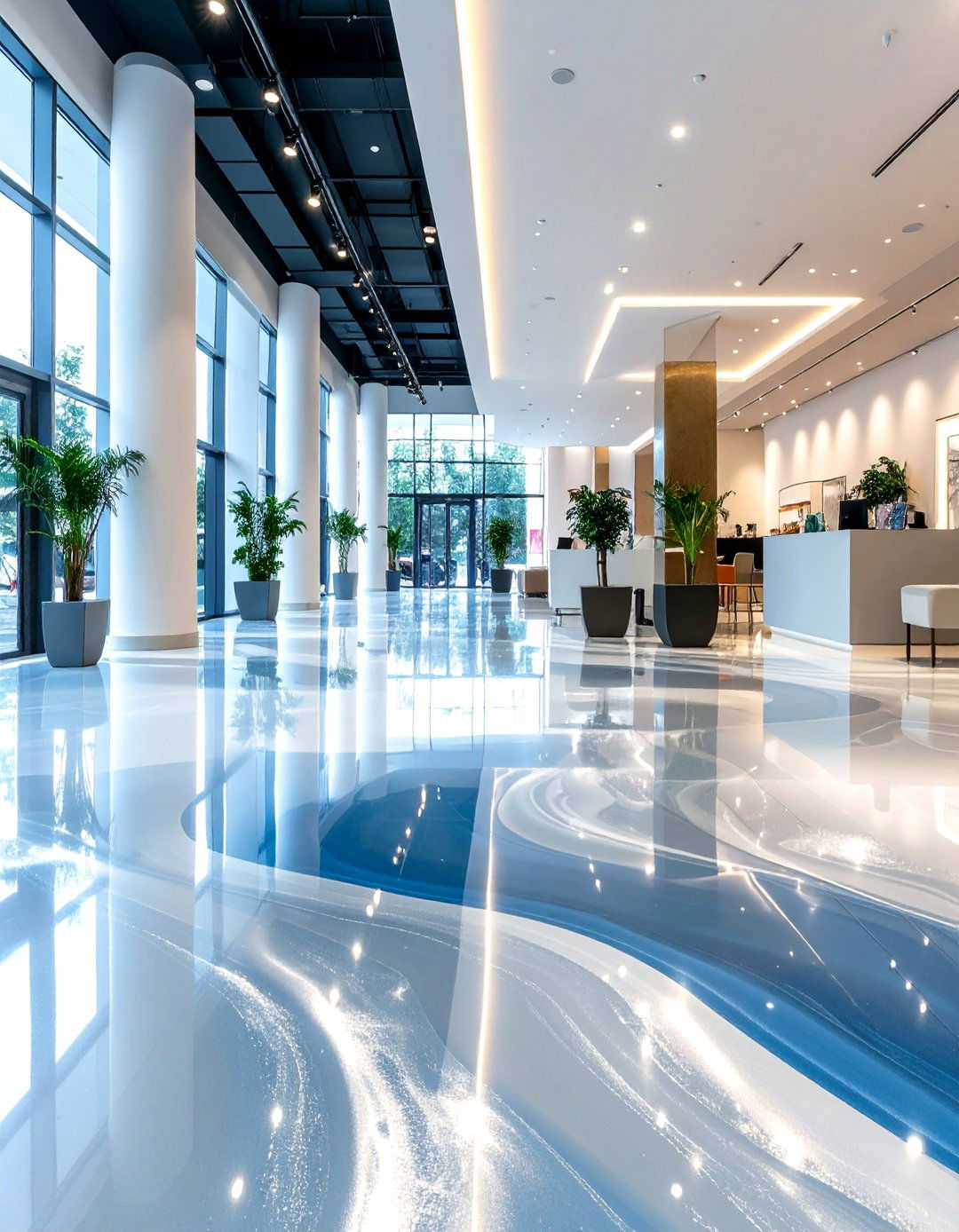
Metallic epoxy indoor concrete floor paint delivers stunning visual appeal with iridescent, smooth, glass-like finishes that create one-of-a-kind designs lasting a lifetime when properly installed. The metallic pigments continuously move during the curing process, ensuring no two floors are identical even with the same color palette. These floors can resemble tinted glass, natural stone, or even molten metal effects depending on application techniques. High-end applications include auto showrooms, hotel lobbies, hair salons, and custom-finished basements, where the reflective quality creates light and airy atmospheres while providing industrial-strength protection. The waterproof, stain-proof surface requires minimal maintenance while delivering dramatic focal points that guests will remember.
3. Marble-Look Indoor Concrete Floor Paint
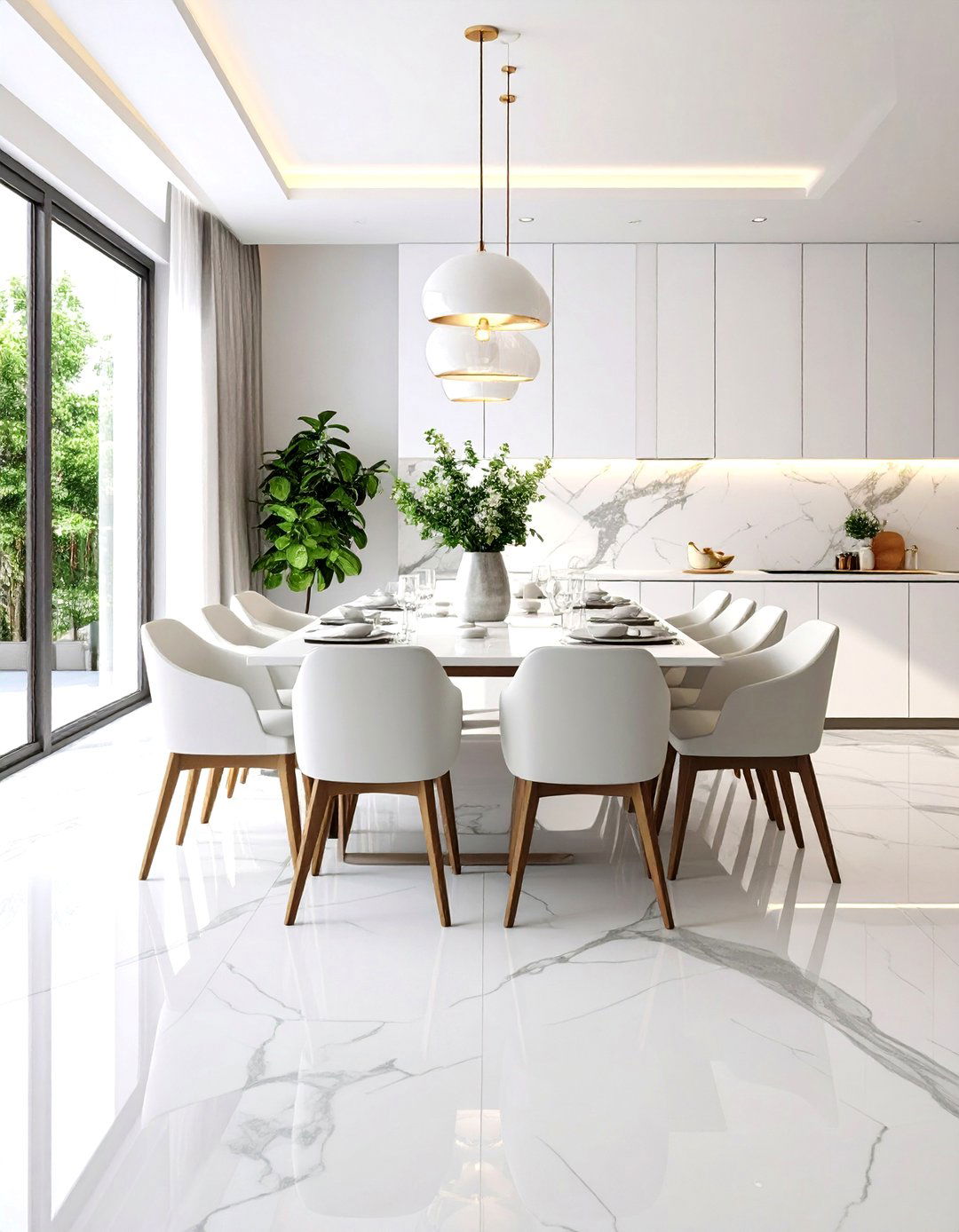
Creating marble-look indoor concrete floor paint involves studying real marble samples to understand natural veining patterns rather than artificial-looking designs, achieving luxury appeal in bathrooms, dining rooms, or entryways. Start with three paint colors: a darker hue, lighter hue, and white, painting broad swatches of the darkest color first, then connecting with lighter paint to create thinner veins. Use small brushes to create web-like controlled cracks between colors, mimicking authentic marble patterns. This technique offers more color options than concrete staining and costs a fraction of real marble while providing all the visual impact. Seal with high-quality polyurethane for protection and subtle shine that enhances the marble effect.
4. Geometric Stenciled Indoor Concrete Floor Paint
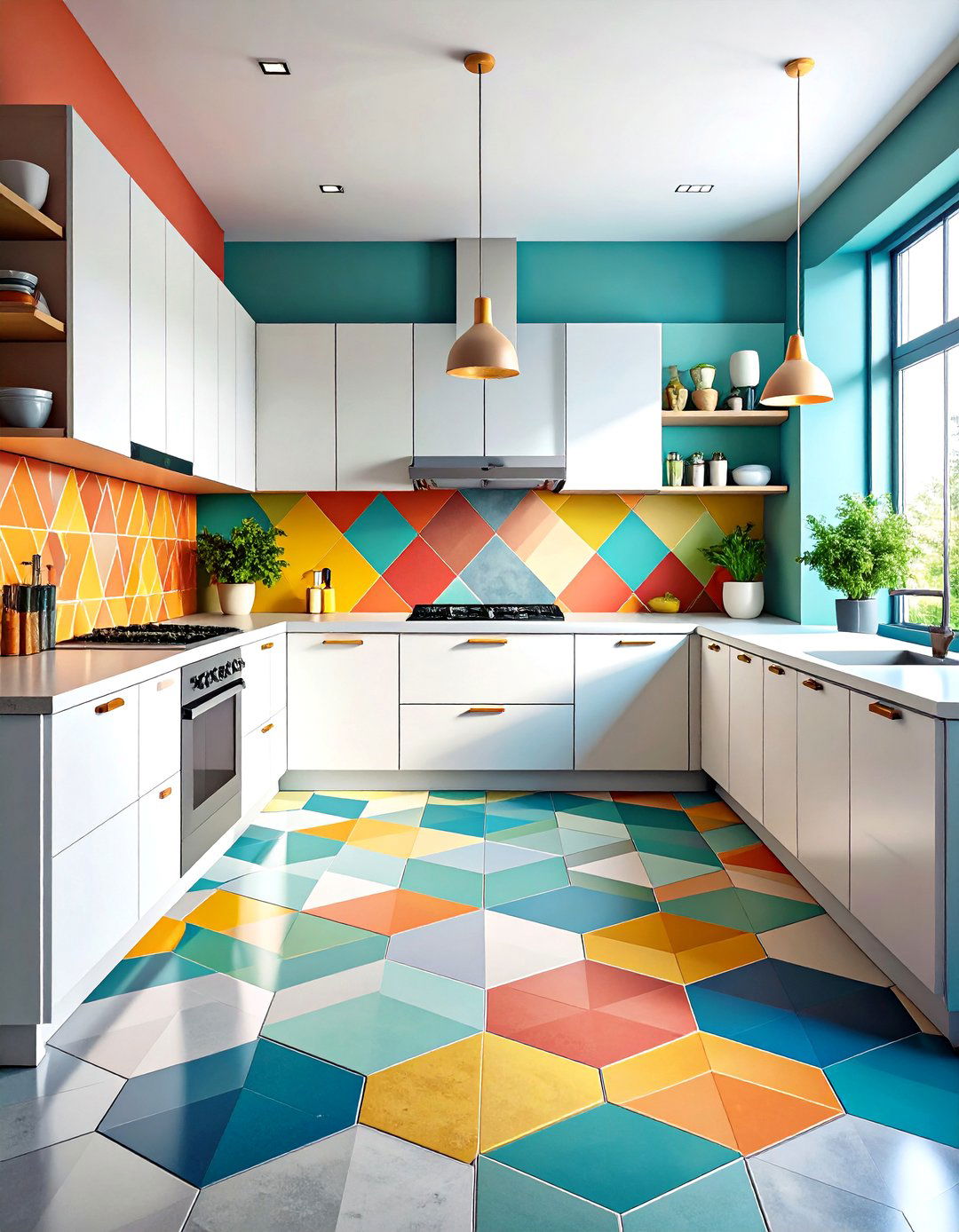
Geometric stenciled indoor concrete floor paint transforms plain surfaces into statement pieces using reusable stencils that deliver crisp, professional results with bold, high-impact patterns rivaling real tile. Popular geometric designs include hexagons, diamonds, triangles, and interlocking circles that create visual movement and modern sophistication. The process involves cleaning thoroughly, applying base coat paint, securing stencils with tape or spray adhesive, and building paint coverage gradually with minimal paint to prevent bleeding under stencils. Choose contrasting colors for dramatic effects or subtle tone-on-tone applications for understated elegance. These patterns work exceptionally well in modern kitchens, contemporary bathrooms, or minimalist living spaces where geometric precision complements existing architectural elements.
5. Moroccan Tile Indoor Concrete Floor Paint
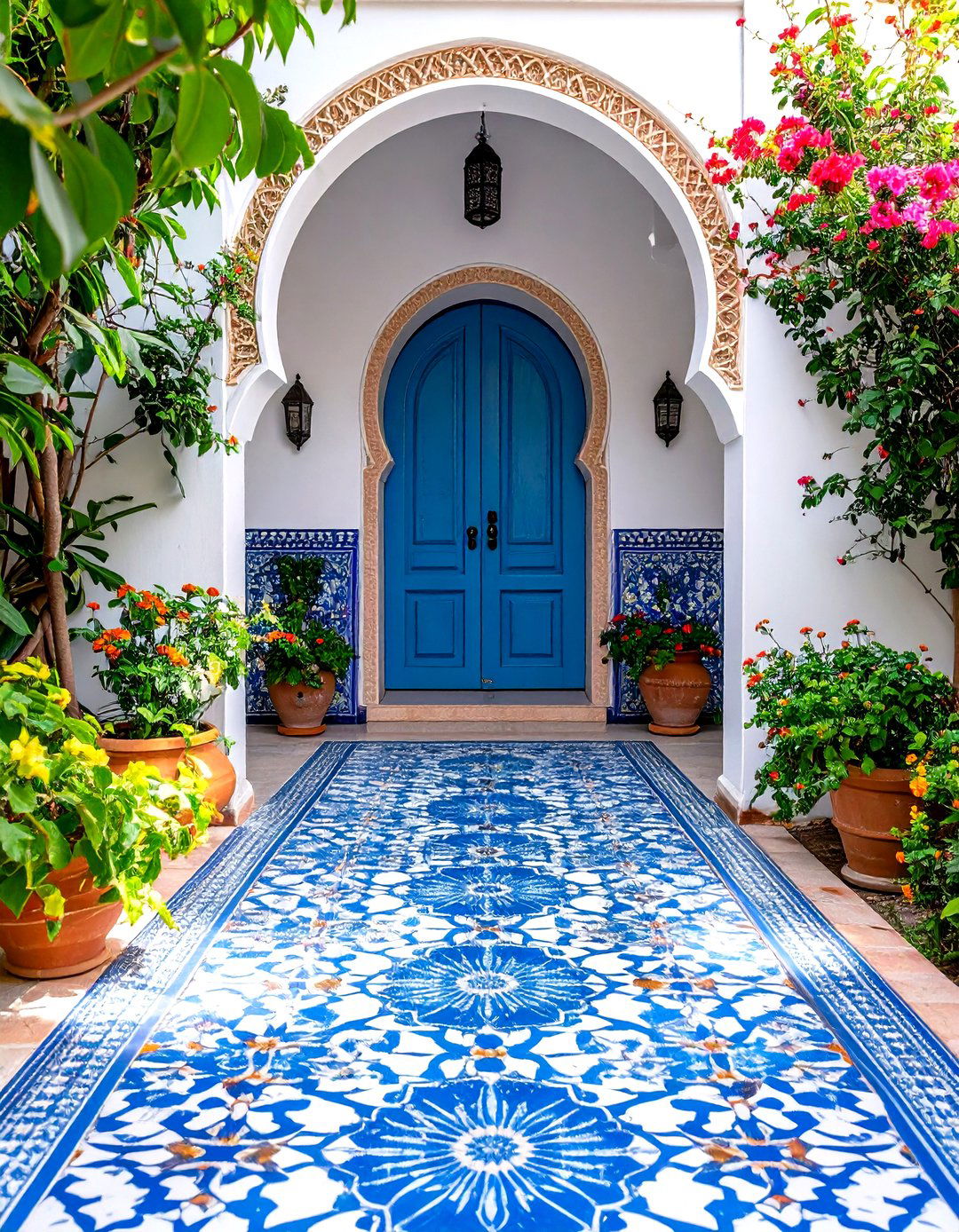
Moroccan tile indoor concrete floor paint allows achievement of complex geometric patterns and rich colors associated with North African design without expensive ceramic tile installation challenges. Authentic motifs include quatrefoils, arabesques, and geometric stars creating repeating patterns across floor surfaces. Layer multiple colors to build complexity and depth mimicking hand-painted ceramics while maintaining stenciled precision. Examples include Lisboa tile patterns, Spanish tile designs, and Mediterranean influences that create amazing stenciled faux tile effects perfect for entryways, powder rooms, or dining areas. This approach works beautifully where dramatic focal points reflecting global design influences are desired, providing visual impact easier to clean than actual tile while maintaining the compelling aesthetics of Moroccan patterns.
6. Hexagon Pattern Indoor Concrete Floor Paint
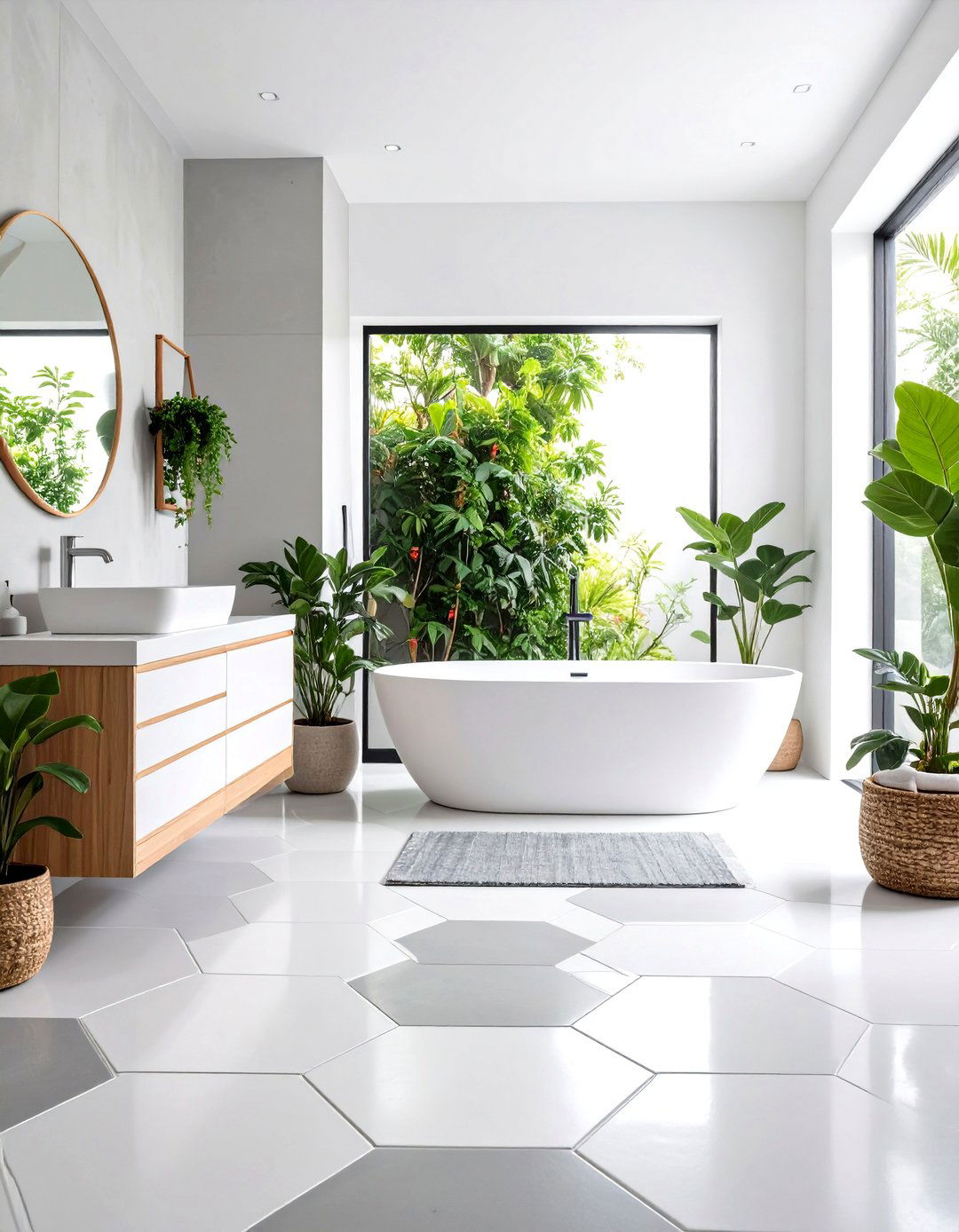
Contemporary hexagon pattern indoor concrete floor paint embraces modern design trends by creating sophisticated honeycomb-inspired designs that add visual movement and geometric interest to concrete surfaces. This contemporary pattern works particularly well in modern kitchens, contemporary bathrooms, or minimalist living spaces where clean lines and geometric precision complement existing architectural elements. Use painter's tape to create precise hexagon shapes or invest in professional stencils for consistent sizing and professional results. Consider alternating colors within hexagons for added complexity, or use single colors with varying opacity levels to create subtle depth variations. This design easily translates to many different styles, including modern or contemporary homes, making it versatile for various interior aesthetics.
7. Distressed Vintage Indoor Concrete Floor Paint

Distressed vintage indoor concrete floor paint creates character-rich surfaces that appear naturally aged through time and wear, perfect for farmhouse, shabby chic, or industrial loft aesthetics. Texturing is an excellent option that helps conceal imperfections while providing functional design, and you can add sparkle to make finishes more contemporary. Layer multiple paint colors, then use sandpaper, steel wool, or scraping tools to remove paint selectively, revealing underlying colors and creating authentic wear patterns. Focus distressing on high-traffic areas where natural wear would occur, such as doorways and central walking paths. Apply antiquing glazes or tea staining techniques for additional aging effects. This technique works exceptionally well in rustic kitchens, vintage-style basements, or converted industrial spaces where authentic character enhances the overall design narrative.
8. Two-Tone Checkered Indoor Concrete Floor Paint
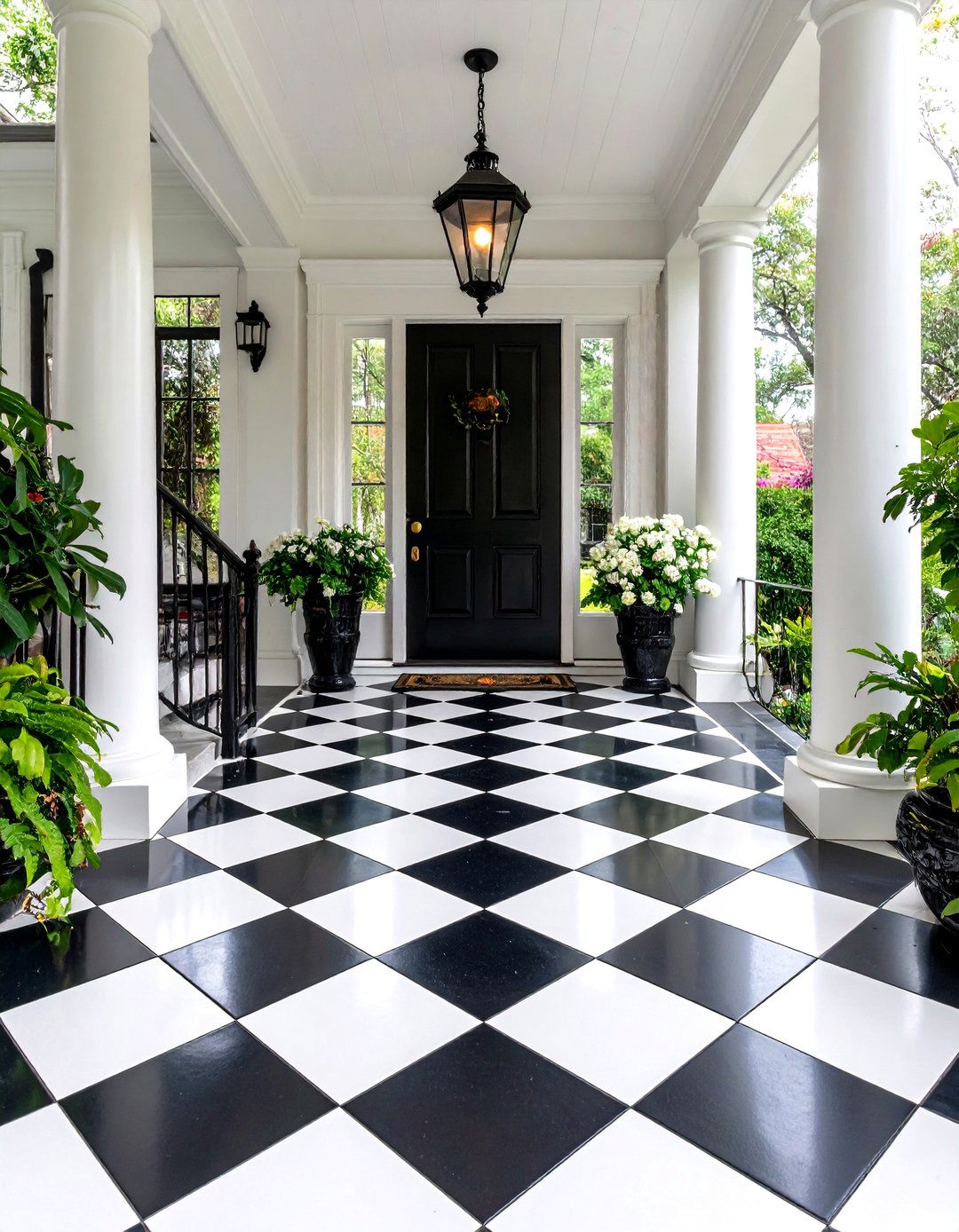
Two-tone checkered indoor concrete floor paint creates sophisticated entrance foyers using specific charcoal and white marble patterns, with scale and proportion being time-tested science that makes all the difference in room aesthetics. Classic black and white combinations provide timeless elegance, while colored variations like navy and cream or forest green and beige offer more personalized approaches. Measure floor carefully to ensure symmetry, marking everything and drawing designs lightly in pencil, painting darker blocks first while being conscious of direction and movement so blocks don't compete with each other. Consider varying square sizes for more dynamic compositions, or maintain uniform sizing for formal, traditional appearances. This pattern works beautifully in entryways, mudrooms, or formal dining areas where classic elegance is desired.
9. Textured Sand Indoor Concrete Floor Paint
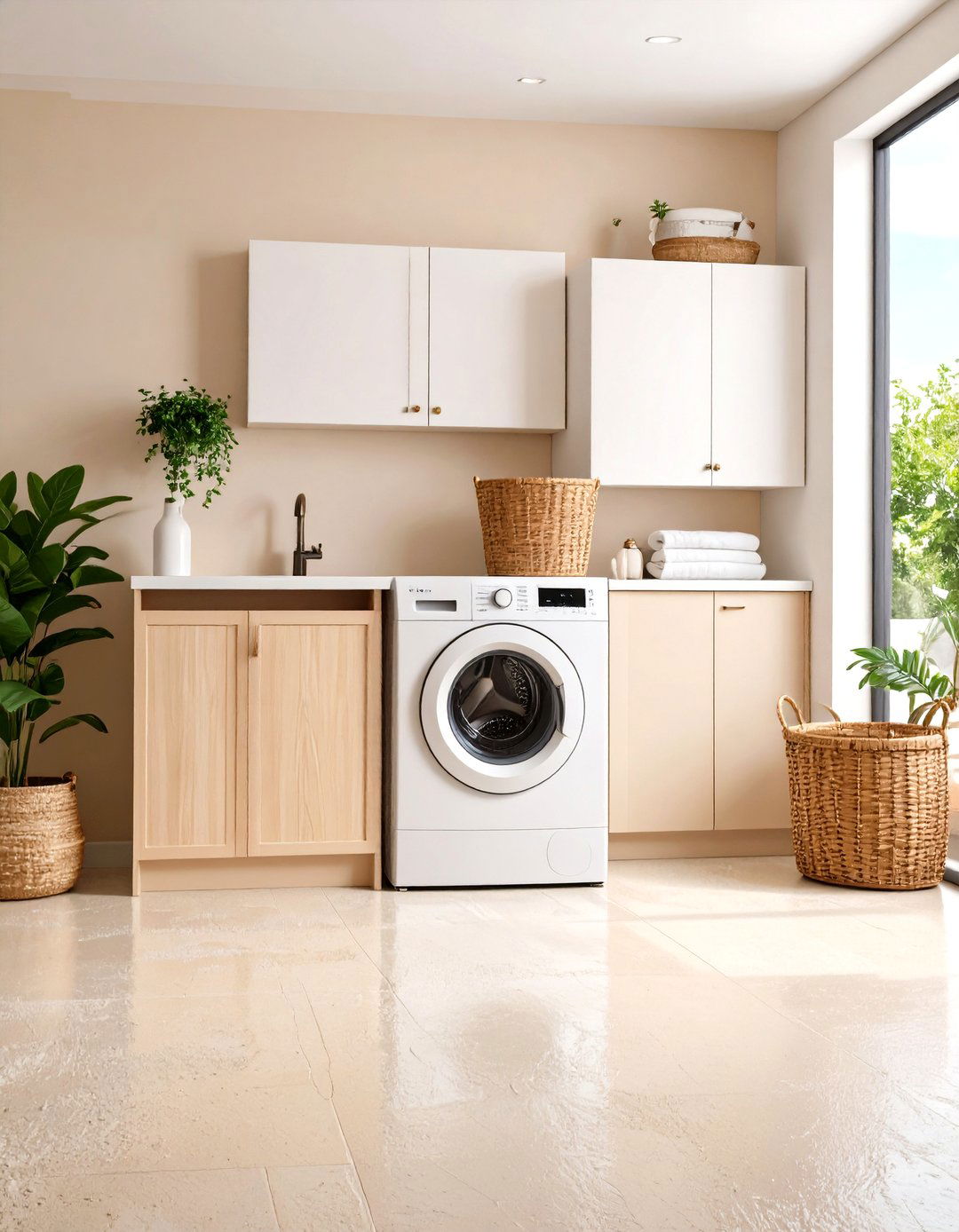
Textured sand indoor concrete floor paint mixes one part sand with four parts paint, rolling the mixture onto surfaces with rollers to create smooth finishes that help conceal imperfections while providing good non-slip properties. This functional approach adds safety benefits alongside aesthetic appeal, making it ideal for areas prone to moisture like laundry rooms, mudrooms, or basement family areas. The finish can be personalized by applying patterns and designs with trowels or brushes, and you can add sparkle to make it even more contemporary. Choose fine sand for subtle texture or coarser sand for more pronounced effects. Various sand colors are available, from natural beige tones to colored options that complement your paint choice while providing practical slip resistance.
10. Ombre Gradient Indoor Concrete Floor Paint
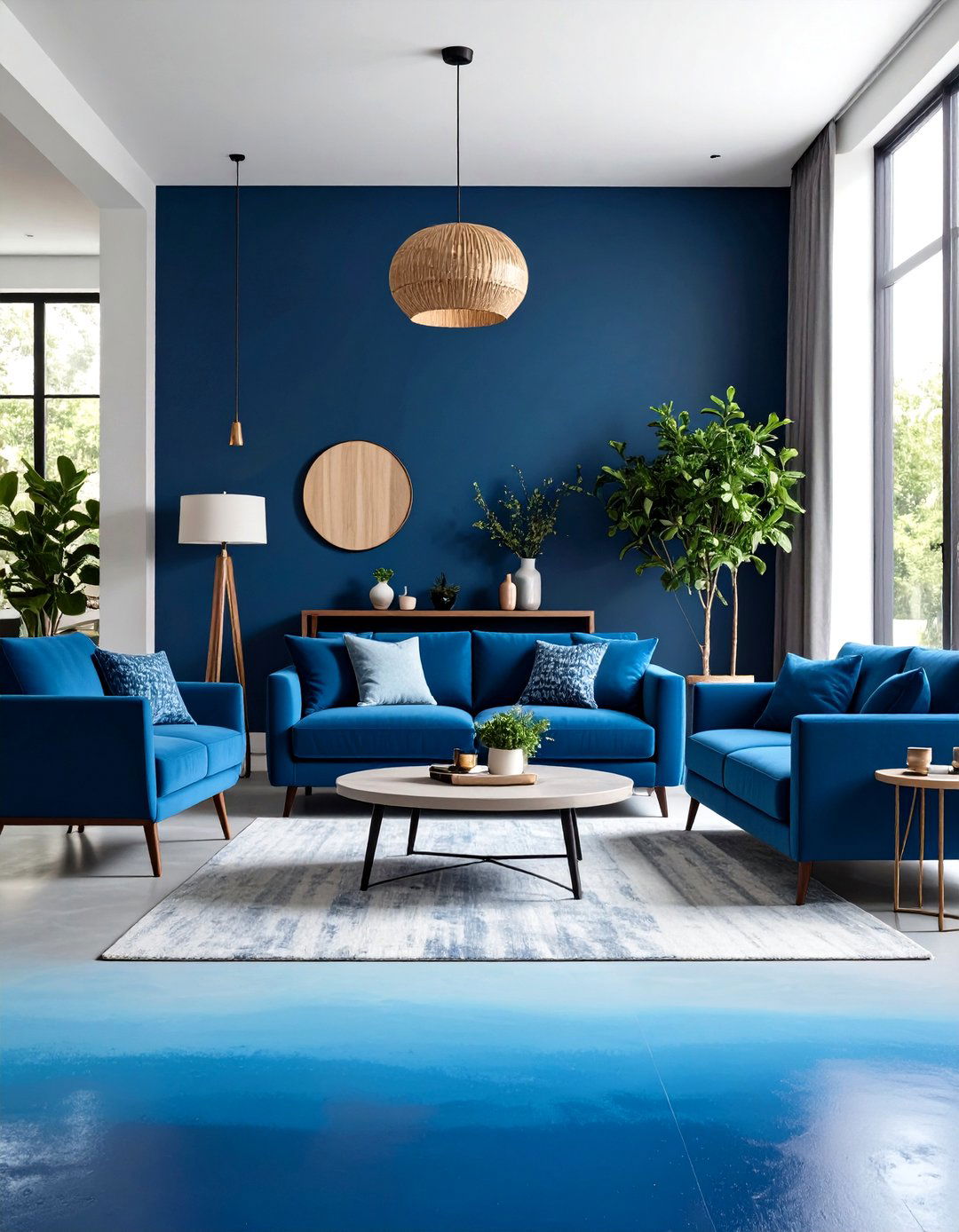
Creating ombre gradient indoor concrete floor paint involves blending multiple paint colors seamlessly from light to dark or between complementary hues, producing sophisticated color transitions that add depth and visual interest to concrete surfaces. Start with the lightest color as your base coat, then gradually blend progressively darker shades using sponges, rags, or specialized blending tools while paint remains workable. Apply base layers of light paint colors and then use sponges or rags to randomly add contrasting colors of concrete paint. Work quickly in small sections to maintain wet edges for smooth blending. Popular combinations include blues flowing into whites for coastal themes, warm browns transitioning to creams for earth tones, or grays blending into whites for sophisticated modern aesthetics. This technique requires practice but creates stunning artistic effects perfect for contemporary living spaces.
11. Wood-Look Indoor Concrete Floor Paint
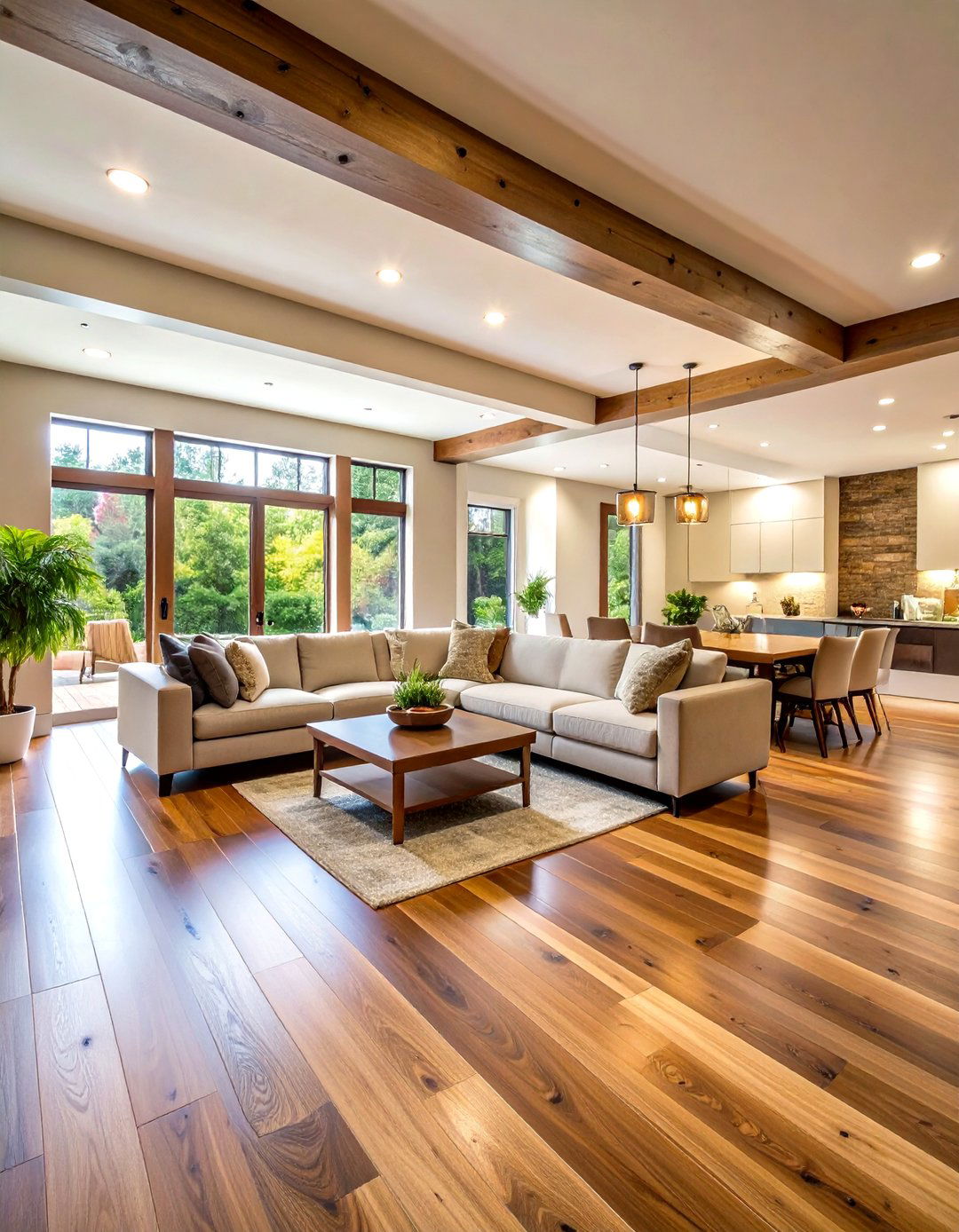
Wood-look indoor concrete floor paint replicates natural wood grain patterns and colors without the maintenance requirements or moisture sensitivity of actual hardwood flooring. Using techniques such as hand carving, stamps and texturing skins, contractors can transform ordinary concrete into natural wood appearances of all types. Create convincing wood grain effects by dragging combing tools, brushes, or specialized graining rockers through wet paint to simulate authentic wood patterns. Choose paint colors matching popular wood species like oak, cherry, pine, or mahogany. Layer multiple brown tones with darker grain lines for realistic depth and variation. This technique works exceptionally well in basements, family rooms, or areas where wood appearance is desired but concrete practicality is needed for moisture resistance and durability.
12. Flake Epoxy Indoor Concrete Floor Paint

Flake epoxy indoor concrete floor paint combines aesthetics and functionality, using dyed vinyl flakes to massively improve floor safety and traction while offering customizable options for expressing design vision. These floors offer endless color and texture combinations, creating seamless, stunning surfaces that help hide imperfections while offering super durable flooring perfect for garages, workshops, and anywhere life gets busy. Apply base epoxy coating, then broadcast decorative flakes across the wet surface before applying protective top coats. The trend shifts towards bolder color blends and textured finishes that hide imperfections and add slip-resistant layers to flooring. Choose single colors for uniform appearances or blend multiple flake colors for more complex, terrazzo-like effects that provide both beauty and enhanced safety features.
13. Striped Pattern Indoor Concrete Floor Paint
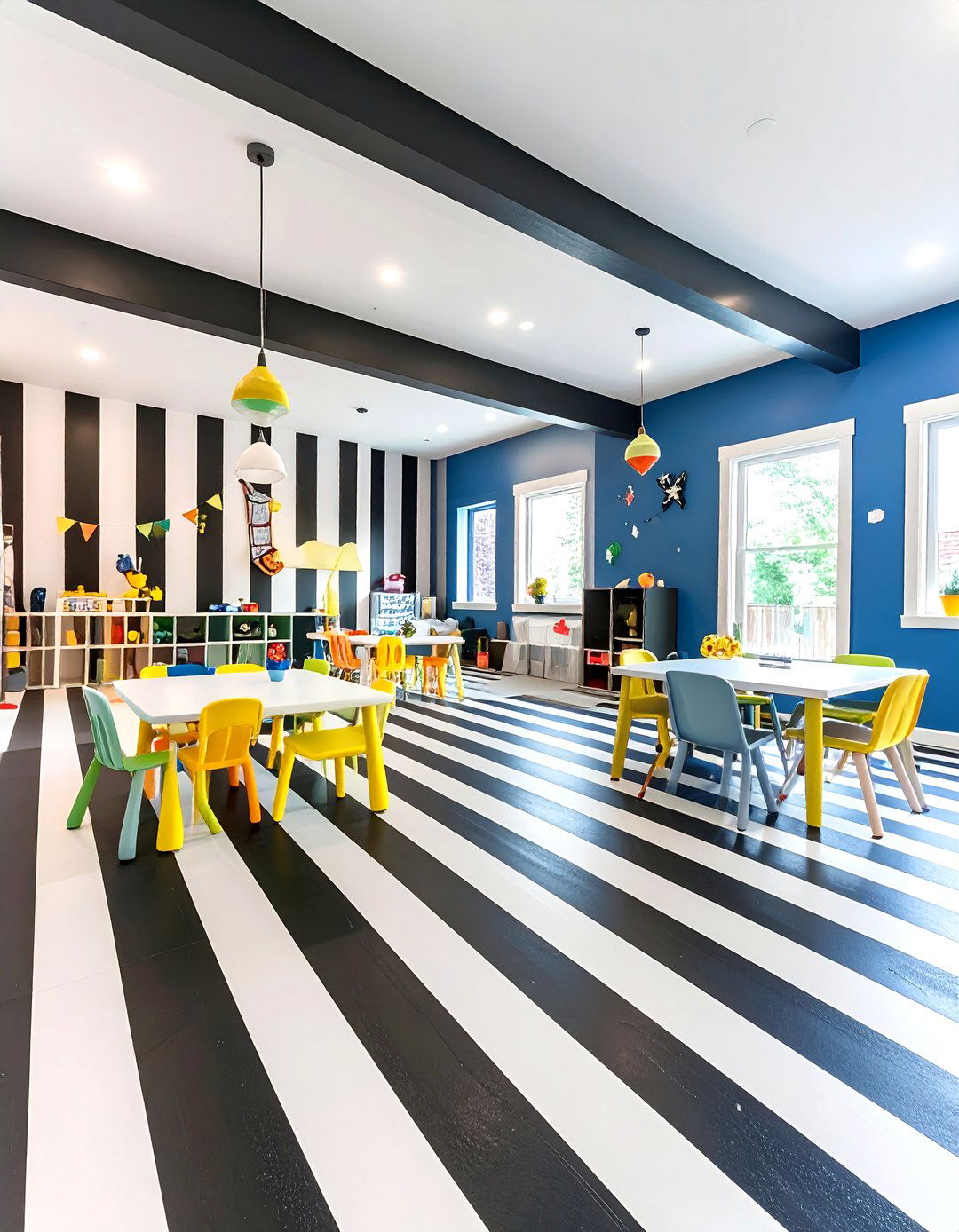
Striped pattern indoor concrete floor paint creates dynamic visual effects that can make spaces appear larger, guide traffic flow, or simply add playful design elements to utilitarian concrete surfaces. Paint concrete floors with stripes using careful measuring and taping techniques to ensure straight, professional lines. Horizontal stripes make rooms appear wider, while vertical stripes create length illusions in narrow spaces. Consider alternating widths for more dynamic compositions, or maintain uniform stripe sizes for formal, organized appearances. Use high-contrast color combinations like black and white for bold statements, or subtle tonal variations within the same color family for sophisticated effects. Carefully peel away tape to avoid peeling paint and causing blemishes on surfaces. This technique works well in modern basements, contemporary laundry rooms, or playful children's spaces.
14. Mandala Medallion Indoor Concrete Floor Paint
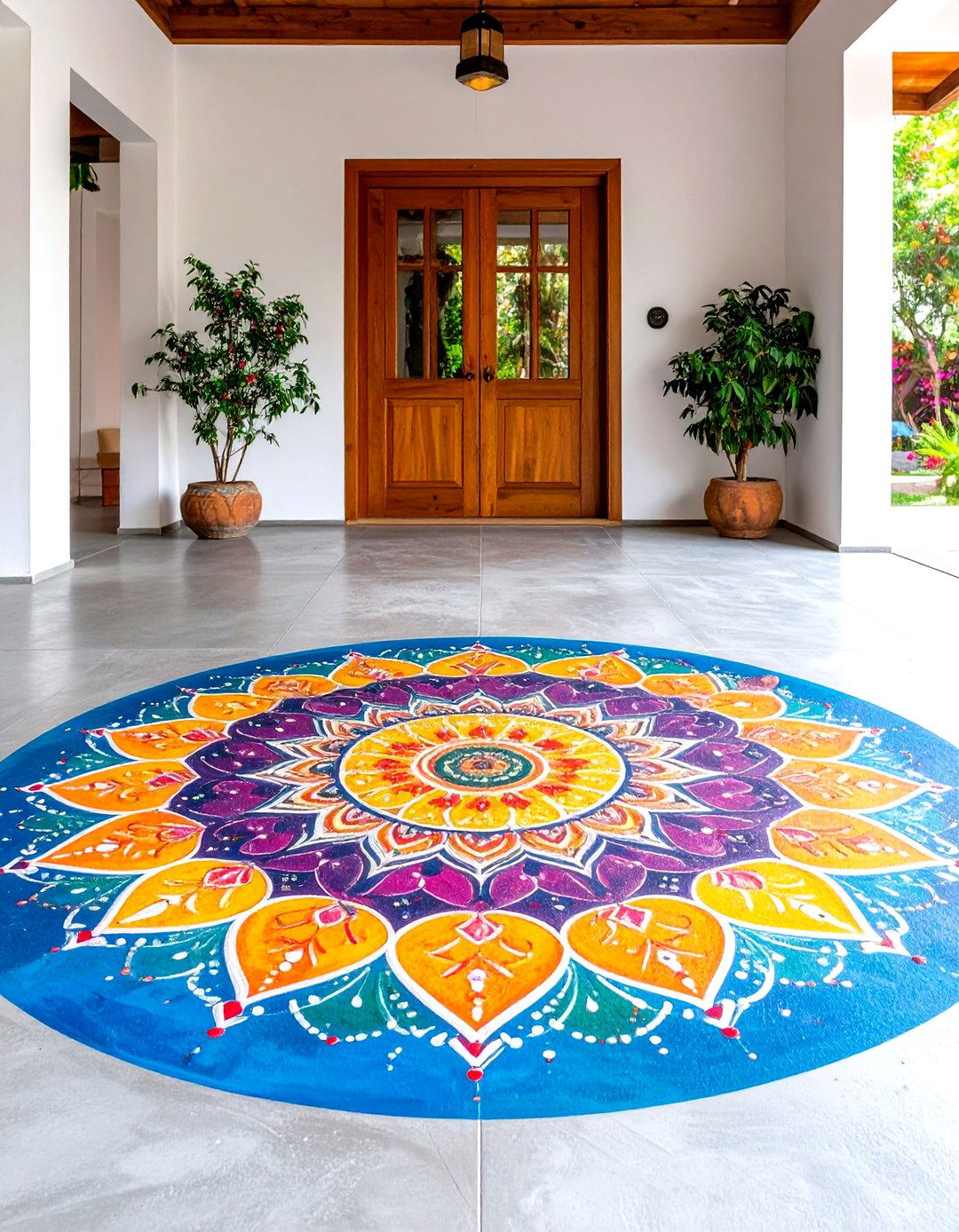
Mandala medallion indoor concrete floor paint features ornate, circular patterns that serve as stunning focal points, available in various sizes for different room proportions and design preferences. These intricate designs work exceptionally well in entryways, meditation rooms, or any space where a central artistic element is desired. Position mandala designs strategically to create amazing stenciled effects that transform overlooked areas into favorite hangouts. Choose colors that complement existing décor while ensuring the medallion remains the focal point. Consider metallic paint accents within mandala patterns for added luxury and light reflection. Surround mandala centers with complementary border designs or solid colors that enhance rather than compete with the central pattern. This approach creates sophisticated, artistic floors that serve as conversation pieces while providing practical concrete surface protection.
15. Industrial Grid Indoor Concrete Floor Paint
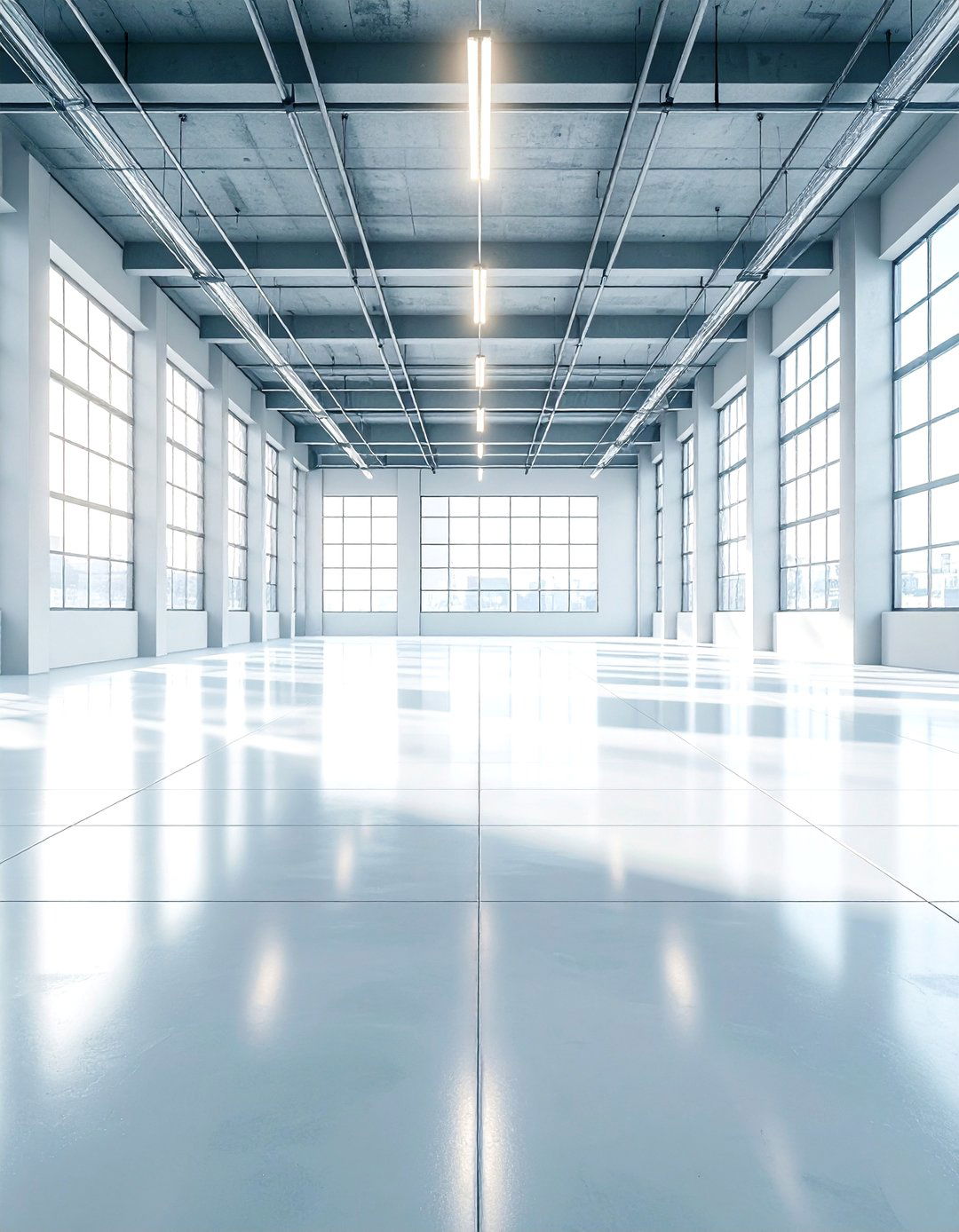
Industrial grid indoor concrete floor paint channels urban loft aesthetics by painting precise grid patterns that celebrate industrial design principles while adding structure and visual organization to concrete surfaces. These geometric divisions can be stylized individually or implement repeating patterns throughout the space. Create grids using painter's tape and measuring tools to ensure straight, evenly spaced lines that reinforce the industrial aesthetic. Choose colors that reflect industrial materials like steel gray, concrete white, or factory yellow for authentic industrial appeal. Consider varying grid sizes within the same floor for added visual interest, or maintain uniform sizing for clean, organized appearances. This design works exceptionally well in modern lofts, contemporary basements, or industrial-style kitchens where structural elements are celebrated rather than hidden.
16. Terrazzo-Look Indoor Concrete Floor Paint

Terrazzo-look indoor concrete floor paint replicates the classic speckled appearance of traditional terrazzo flooring using paint techniques that scatter multiple colored chips or speckles across base coats for authentic terrazzo aesthetics. Create endless color and texture combinations that help hide imperfections while offering super durable surfaces with easy cleanup using just damp mops. Apply solid base coat in neutral colors like white, gray, or beige, then use sponges, brushes, or spray techniques to add multiple colored speckles in various sizes. Traditional terrazzo colors include combinations of white, black, gray, and earth tones, but contemporary versions embrace brighter, more varied color palettes. This technique works beautifully in mid-century modern homes, contemporary kitchens, or any space where the classic terrazzo aesthetic is desired without the expense and complexity of actual terrazzo installation.
17. High-Gloss Clear Indoor Concrete Floor Paint

High-gloss clear indoor concrete floor paint represents one of the most popular concrete floor treatments, featuring neutral gray tones that coordinate well with industrial elements like metal and brick for cohesive, polished environments. Clear seals allow concrete to show natural texture and movement while providing smooth, protected finishes. This minimalist approach emphasizes concrete's inherent beauty while providing protection from stains, moisture, and wear. Apply multiple protective topcoats of high-gloss polyurethane as protective finishes, allowing each layer to dry before applying the next. The reflective surface enhances natural and artificial lighting, making spaces appear larger and brighter. This treatment works exceptionally well in modern industrial spaces, contemporary lofts, or minimalist homes where concrete's natural character is celebrated as a design element.
18. Matte Chalk Paint Indoor Concrete Floor Paint
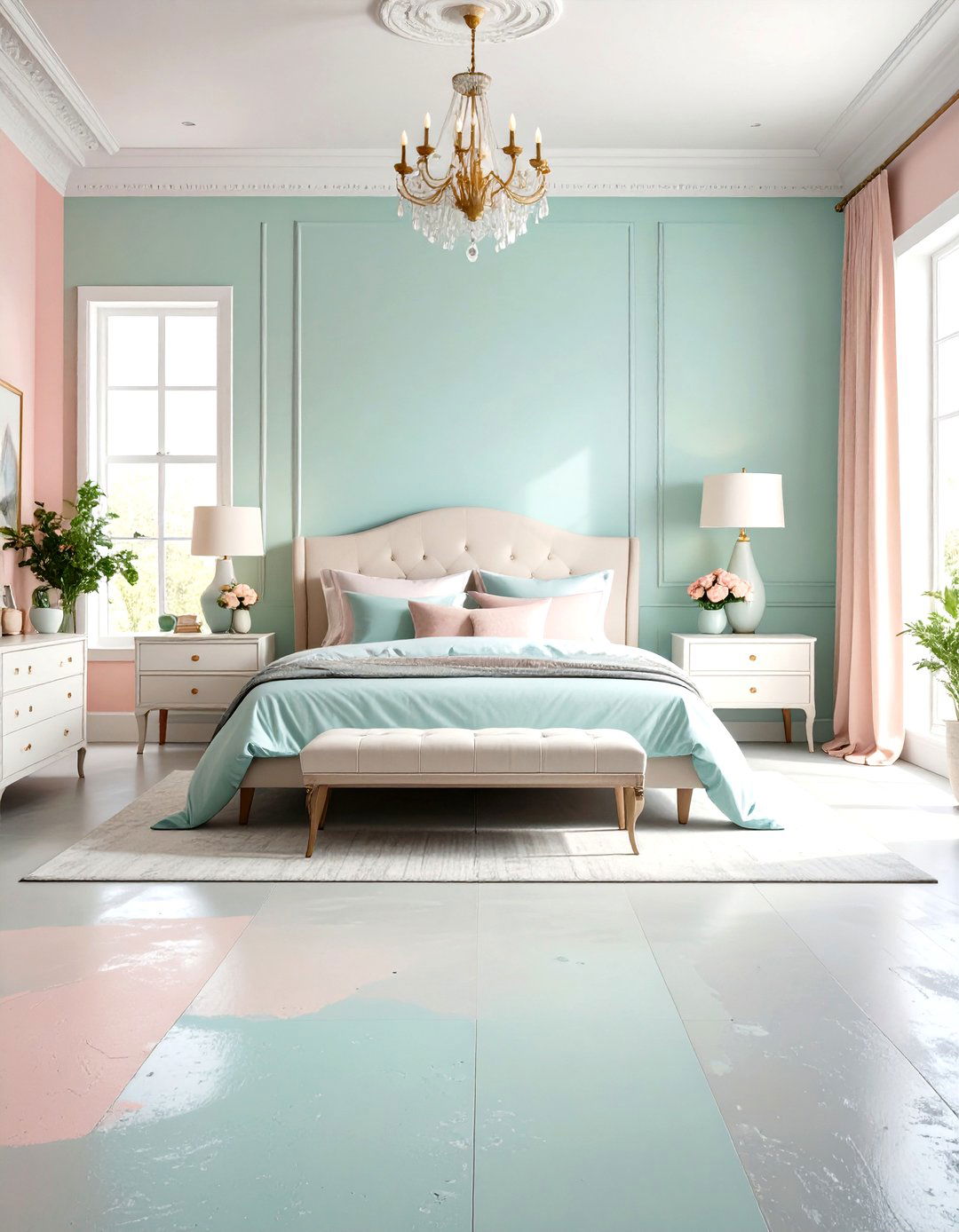
Matte chalk paint indoor concrete floor paint offers easy application using chalk paint products that provide flat, non-reflective finishes perfect for vintage, farmhouse, or casual design aesthetics. Chalk paint techniques create unique finishes that can be layered and distressed for additional character and depth. This paint type adheres well to concrete surfaces without extensive priming, making it ideal for weekend DIY projects. Choose from extensive color palettes including soft pastels, warm earth tones, or bold accent colors depending on desired aesthetics. Apply Annie Sloan Lacquer protection in thin mixes with water, followed by full-strength coats for durability while maintaining the characteristic matte appearance. This approach works beautifully in shabby chic bedrooms, farmhouse kitchens, or casual family rooms where relaxed, comfortable aesthetics are desired.
19. Acid-Stained Indoor Concrete Floor Paint
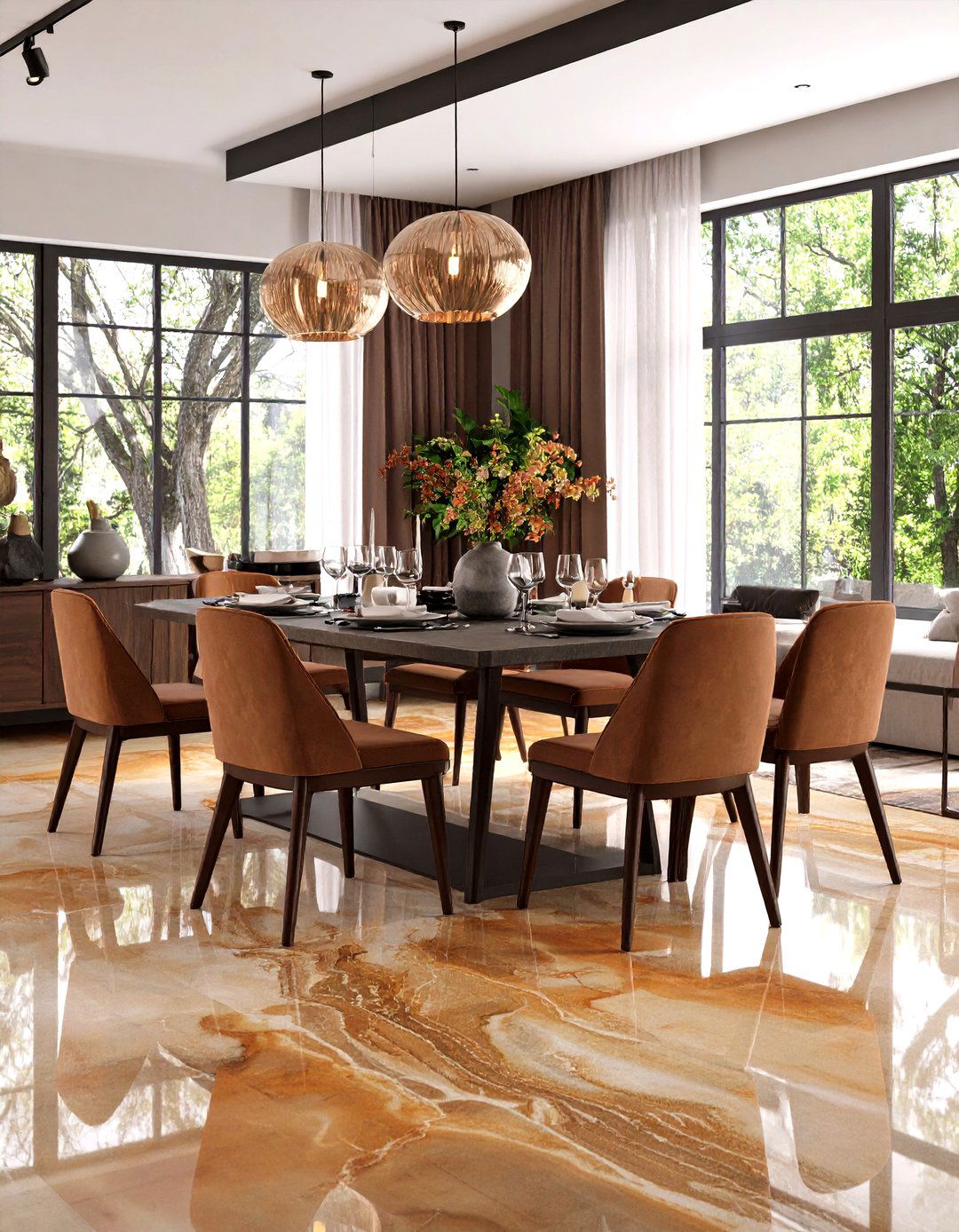
Acid-stained indoor concrete floor paint creates elegant marble looks by reacting chemically with concrete to form translucent colors and marbling effects, with multiple stain colors creating veining effects that are marble hallmarks. Acid-based stains create chemical reactions that alter concrete's look and color, providing long-lasting, fade-resistant results even without sealers. Apply using pump-up sprayers in small sections with overlapping edges for even coverage, and use faux techniques like ragging or sponging to achieve different effects. Popular color combinations include warm browns with soft green undertones for natural, earthy feels perfect for rustic or industrial designs. For existing damaged floors, concrete overlays hide cracks, fill uneven spots, and cover discoloration to present fresh surfaces for consistent staining throughout spaces.
20. Border Design Indoor Concrete Floor Paint
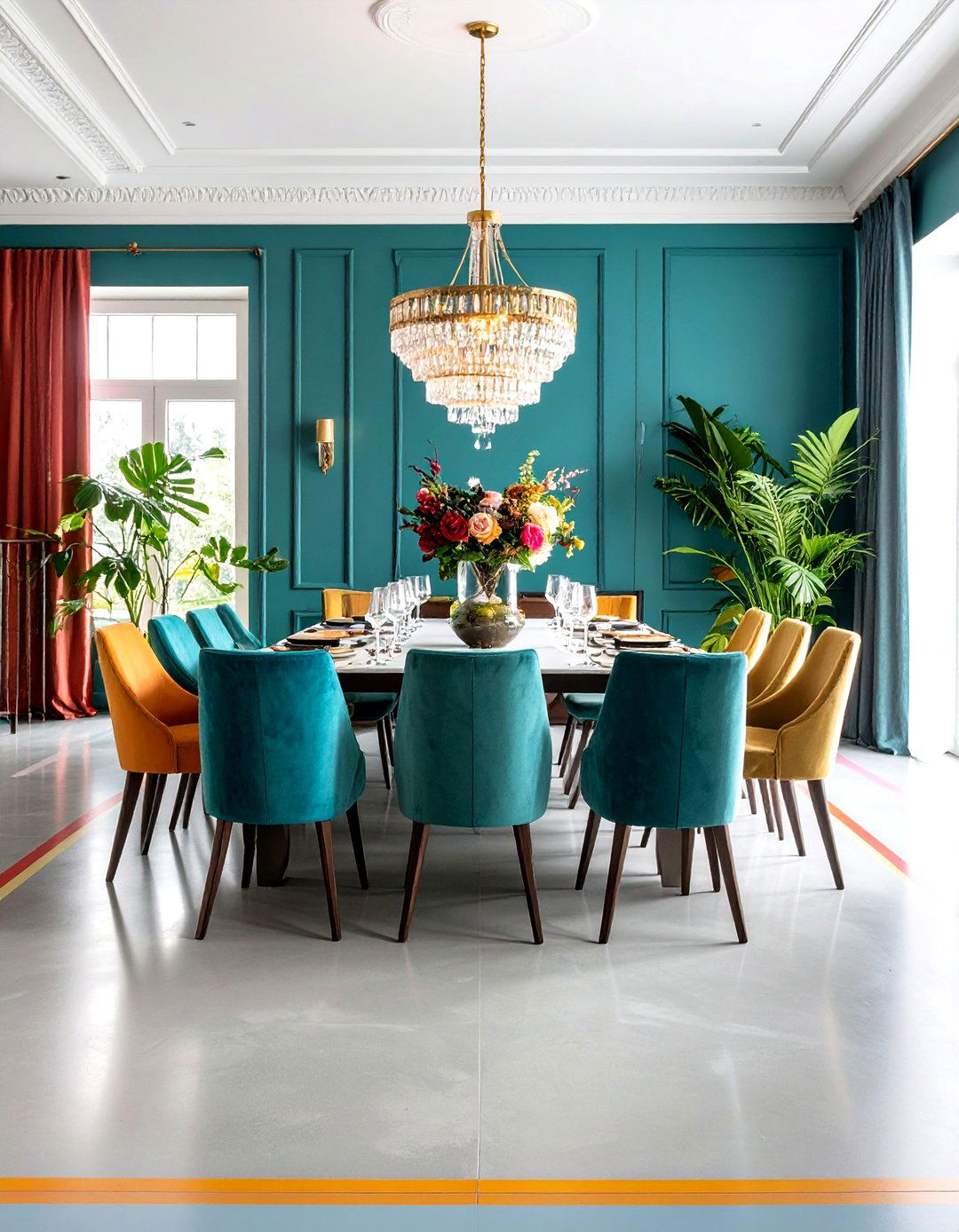
Border design indoor concrete floor paint creates geometric patterns and organized appearances by using painter's tape to create borders around floor perimeters, painted with contrasting colors for definition and visual interest. These decorative borders can range from simple single-color bands to complex multi-colored patterns that frame the entire floor space. Consider stenciling only two rows around perimeters to create borders rather than covering entire floors, providing definition without overwhelming spaces. Popular border widths range from narrow 2-inch accent lines to substantial 12-inch decorative bands depending on room size and desired impact. Choose colors that complement wall colors and furniture while providing sufficient contrast to define the border clearly. This technique works exceptionally well in formal dining rooms, traditional entryways, or any space where floor definition enhances the overall room composition and architectural features.
Conclusion:
Indoor concrete floor painting offers unlimited creative possibilities for transforming utilitarian surfaces into stunning design statements that rival expensive flooring options. From simple solid colors to complex stenciled patterns, marble effects to metallic finishes, these 20 ideas demonstrate how paint can completely reimagine concrete floors while providing practical benefits like durability, easy maintenance, and moisture resistance. Whether you choose dramatic geometric patterns, elegant marble looks, or contemporary industrial finishes, painted concrete floors deliver lasting beauty at affordable prices, making them ideal solutions for basements, garages, laundry rooms, and living spaces throughout your home.


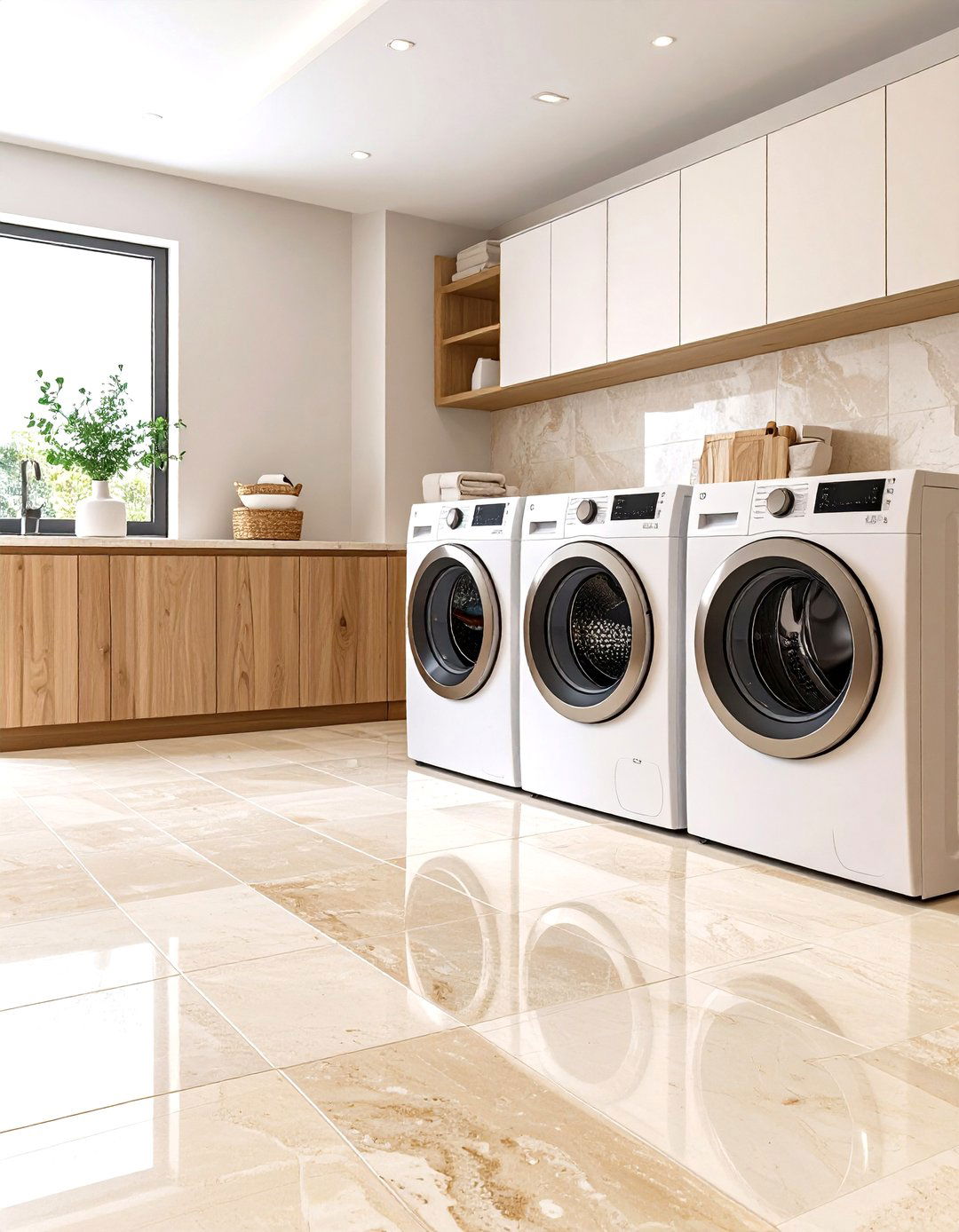
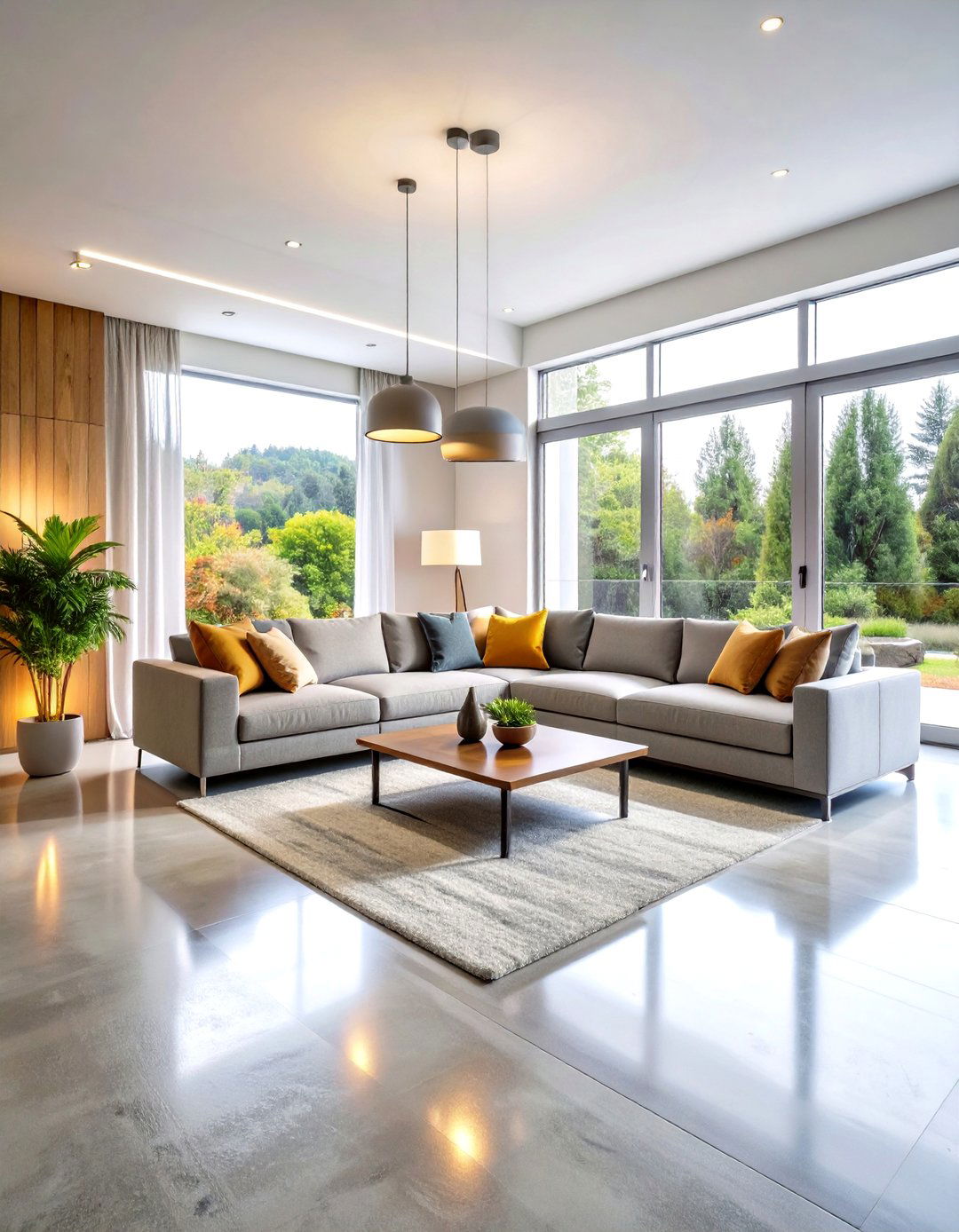
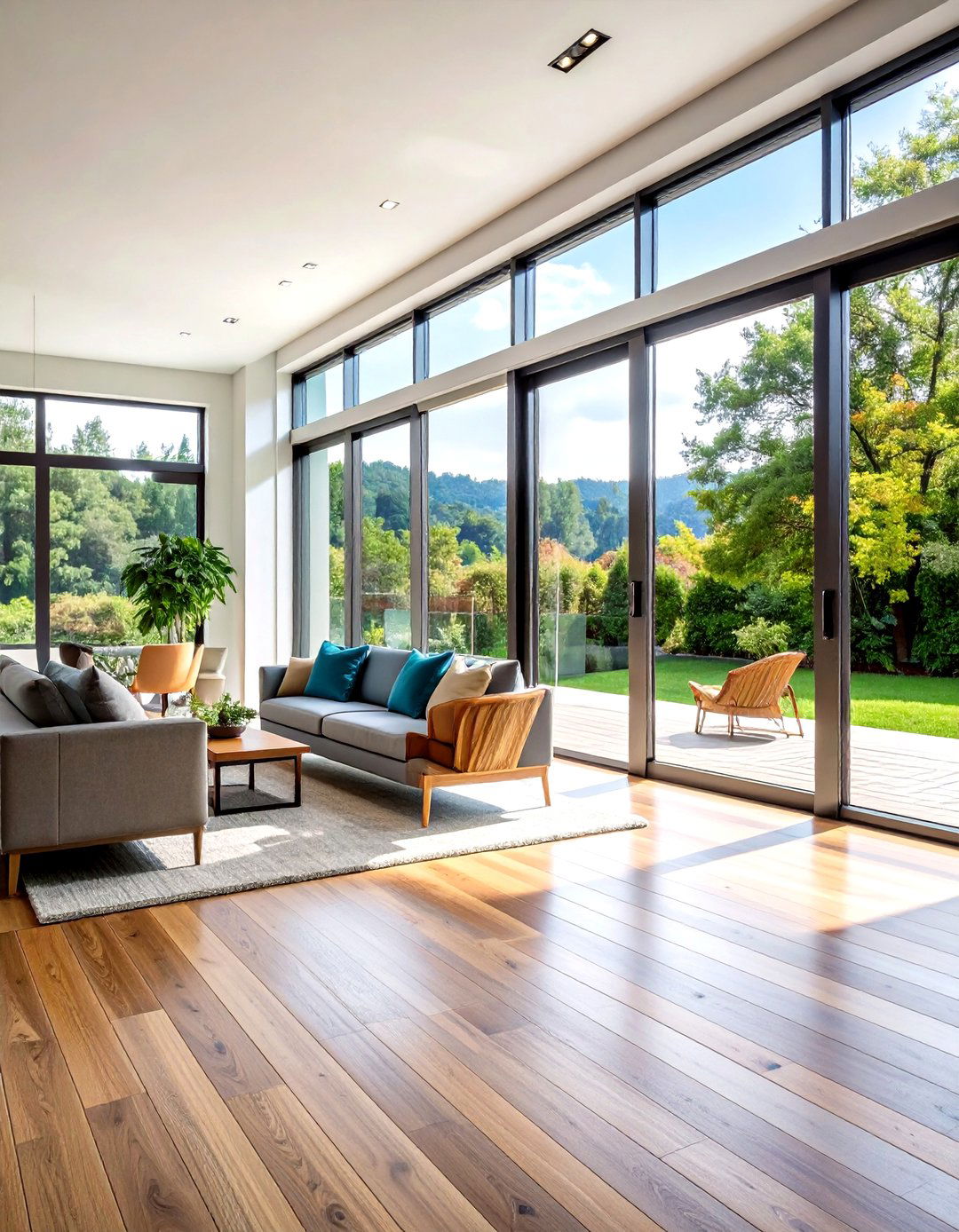
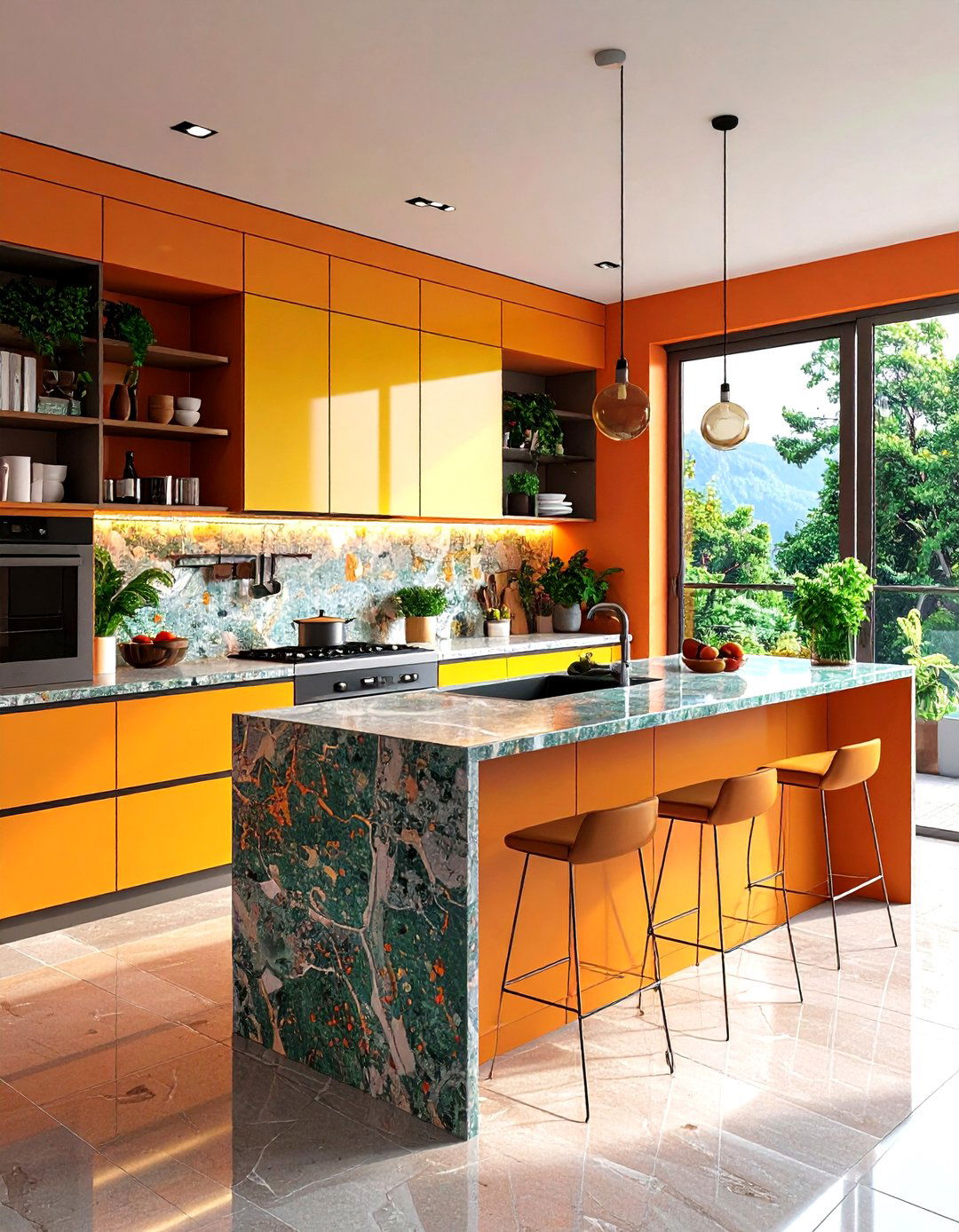
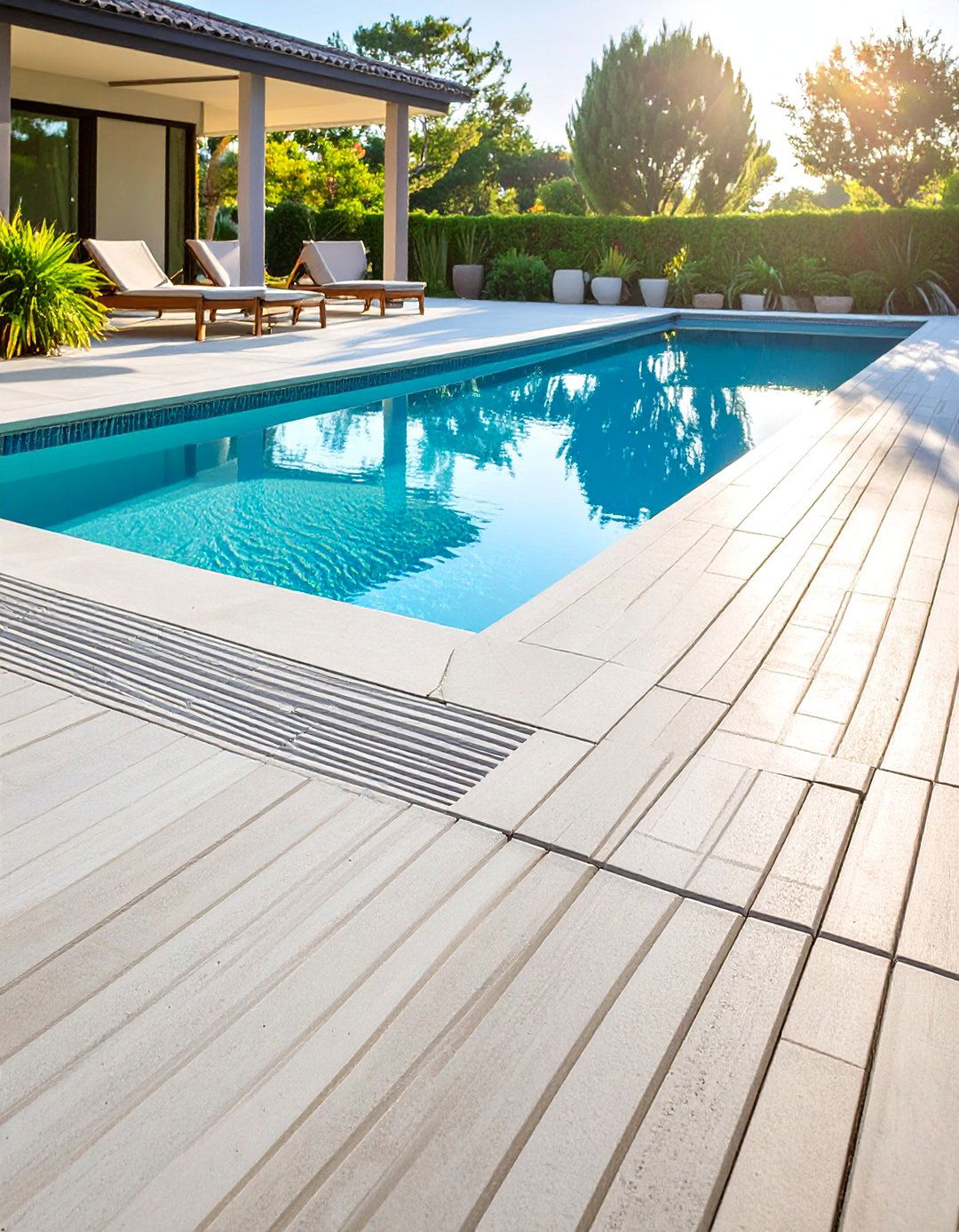
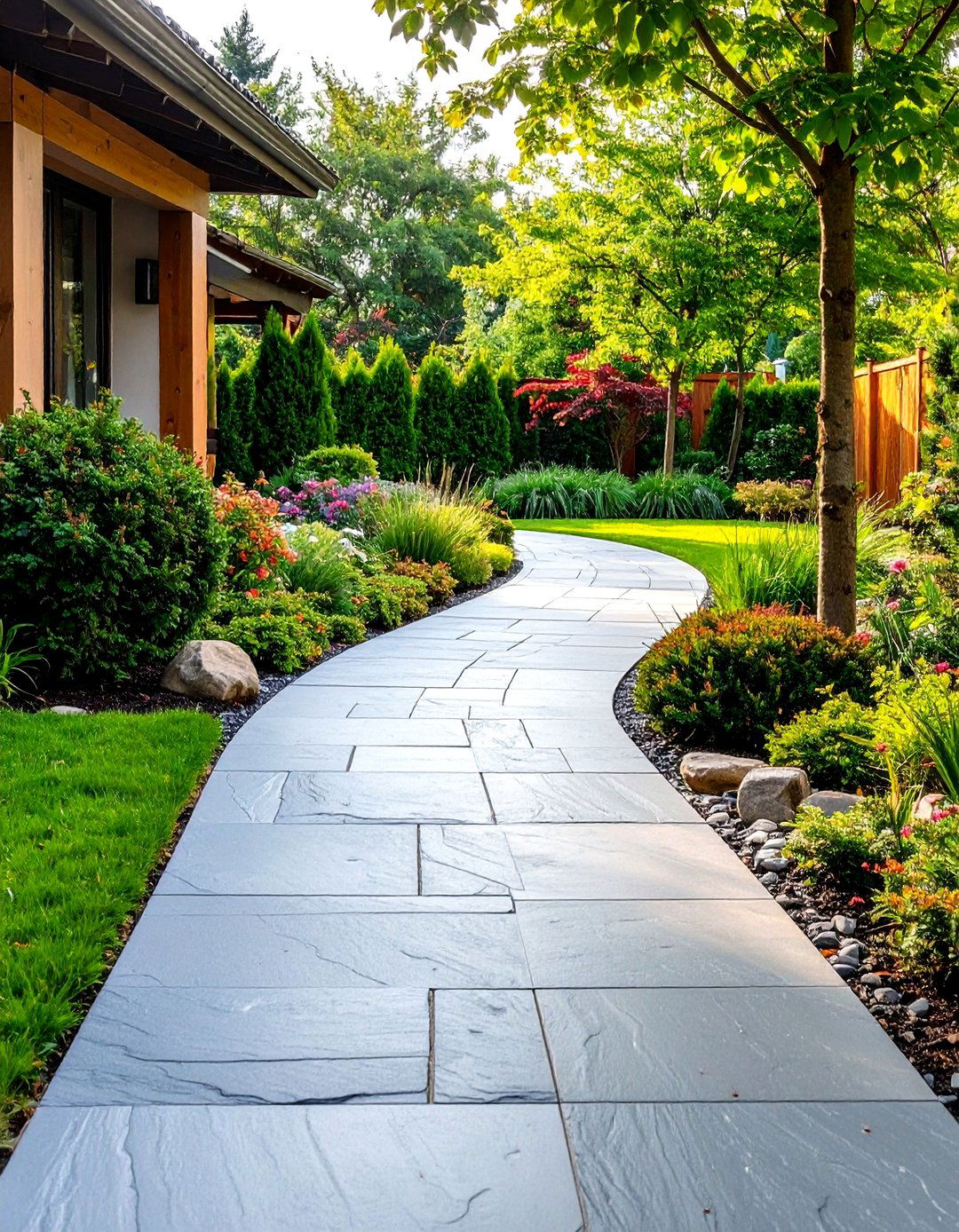
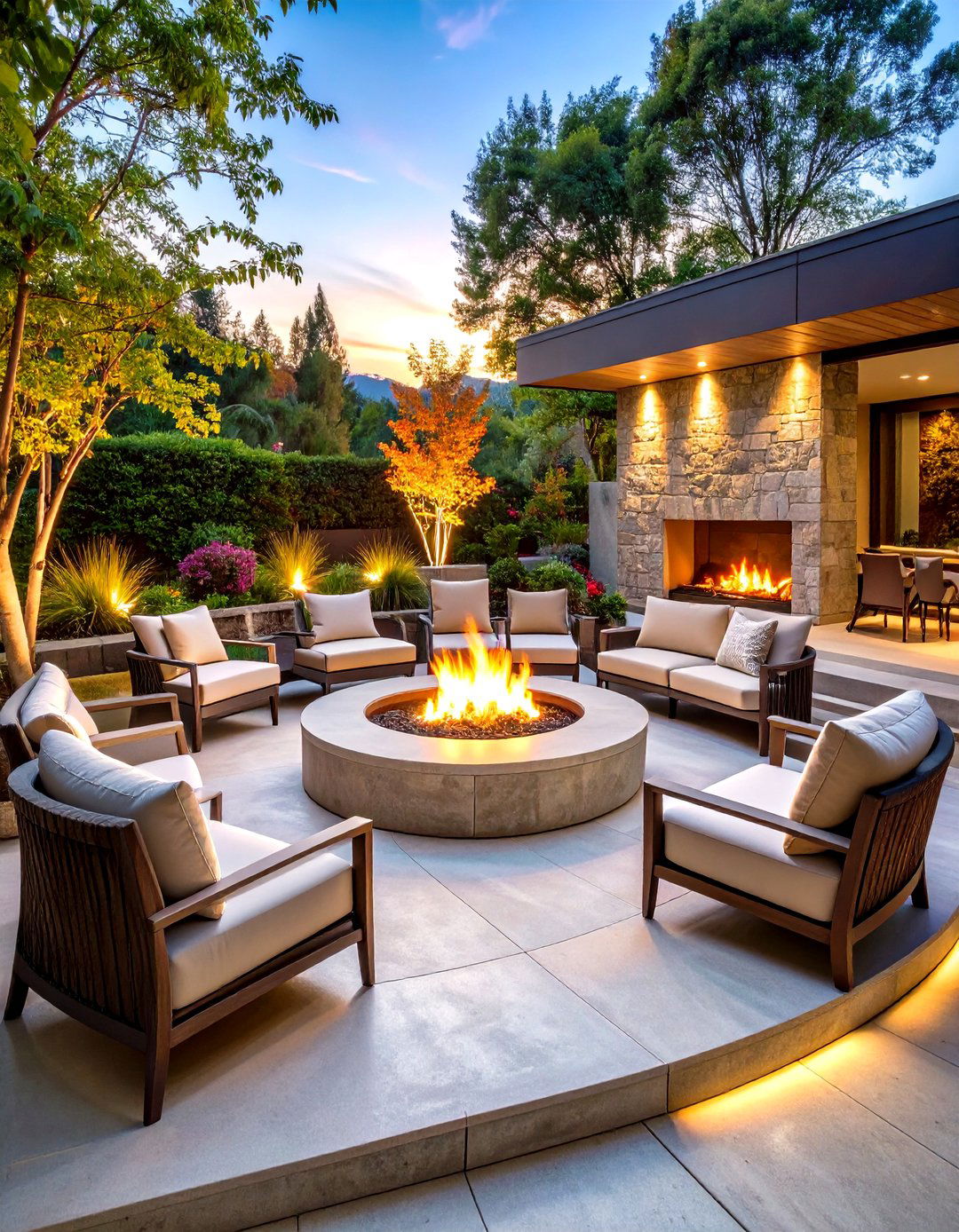
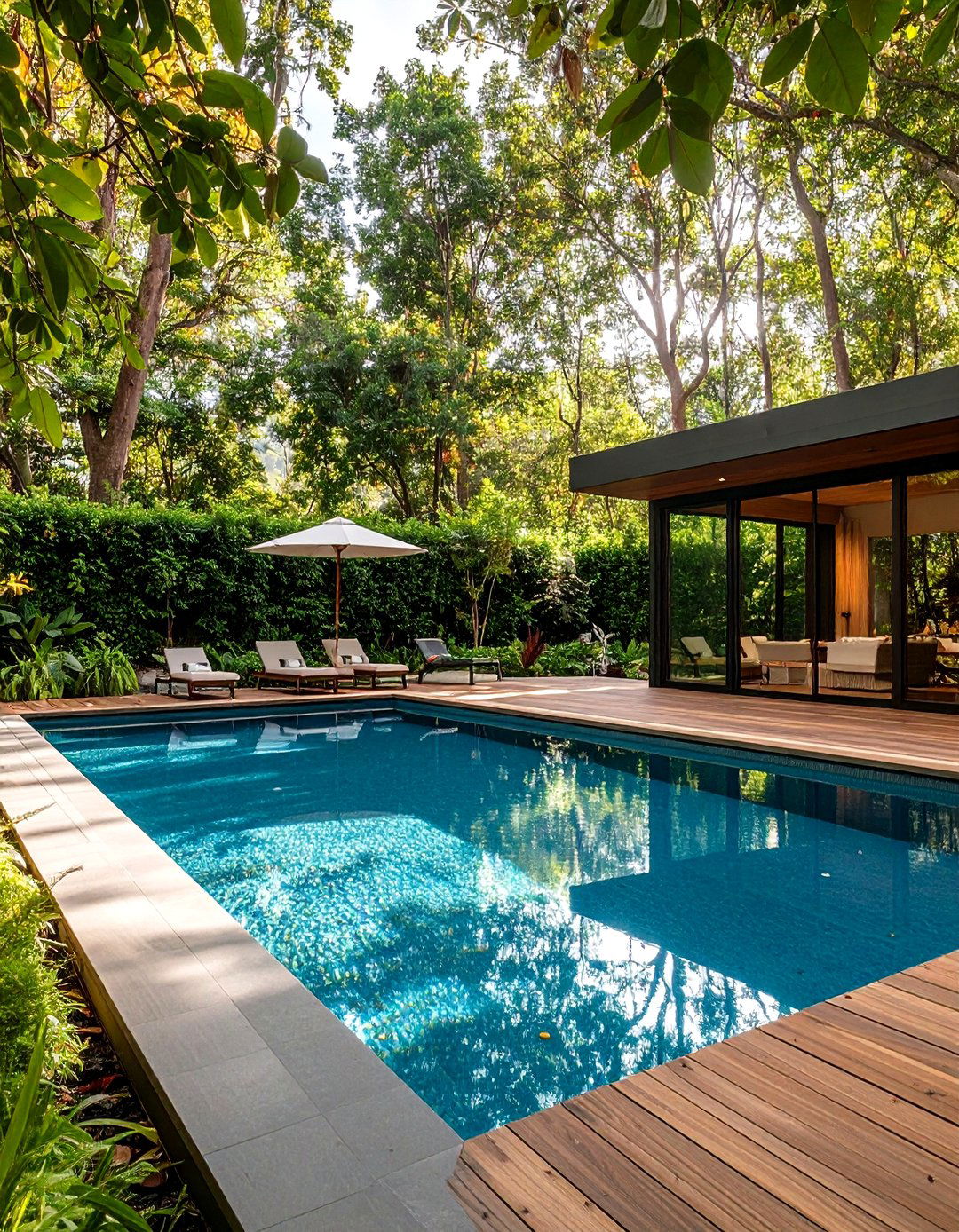
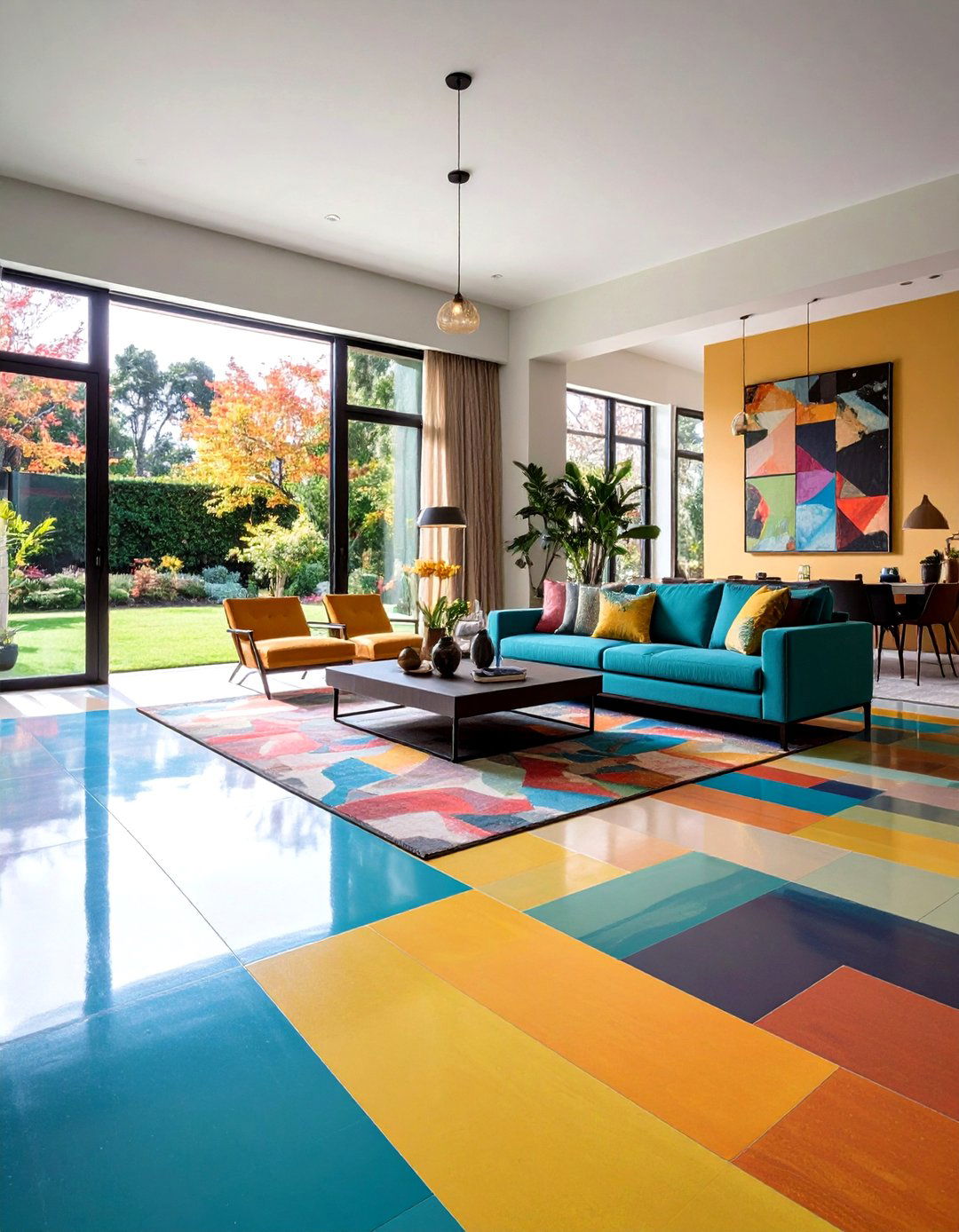
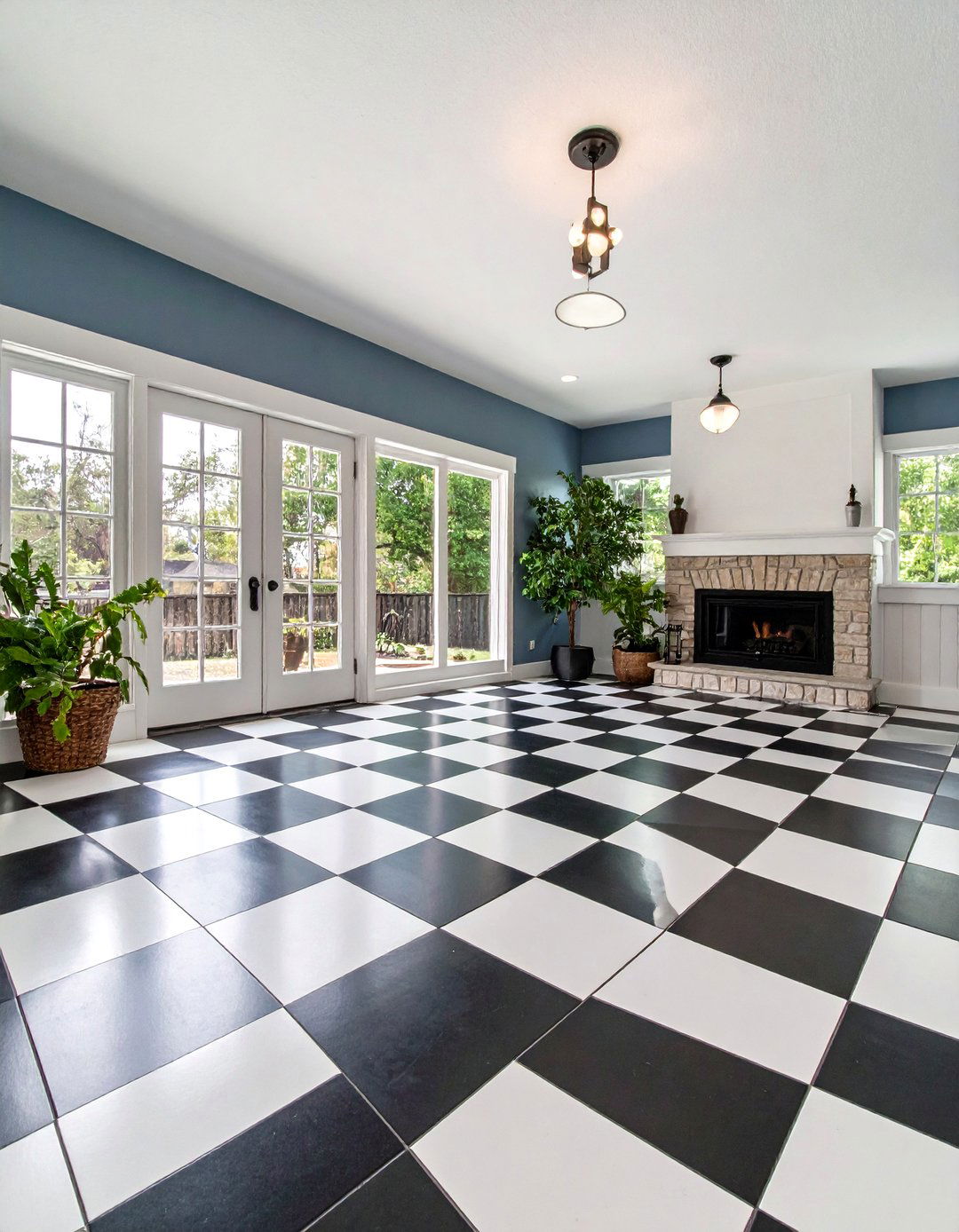

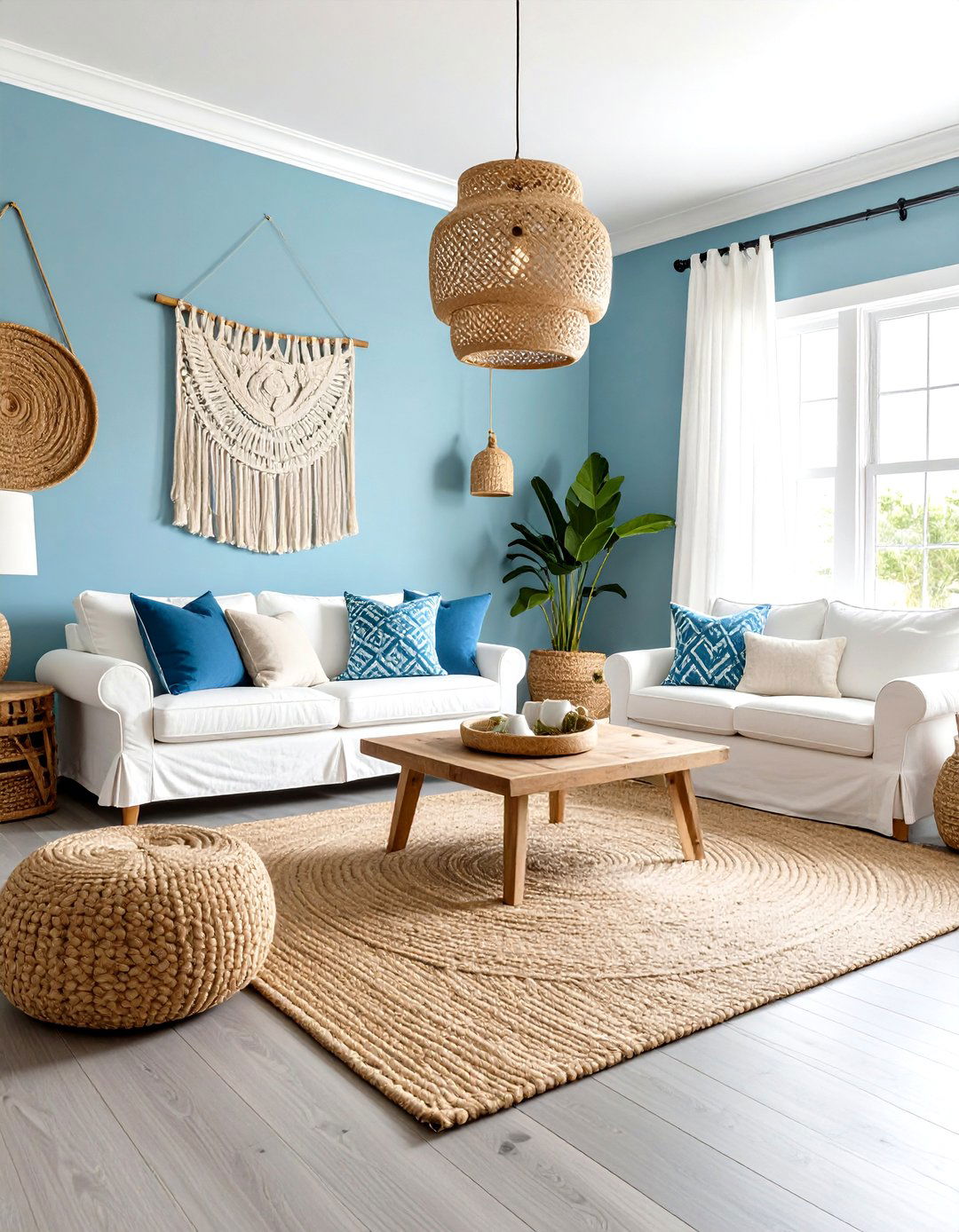

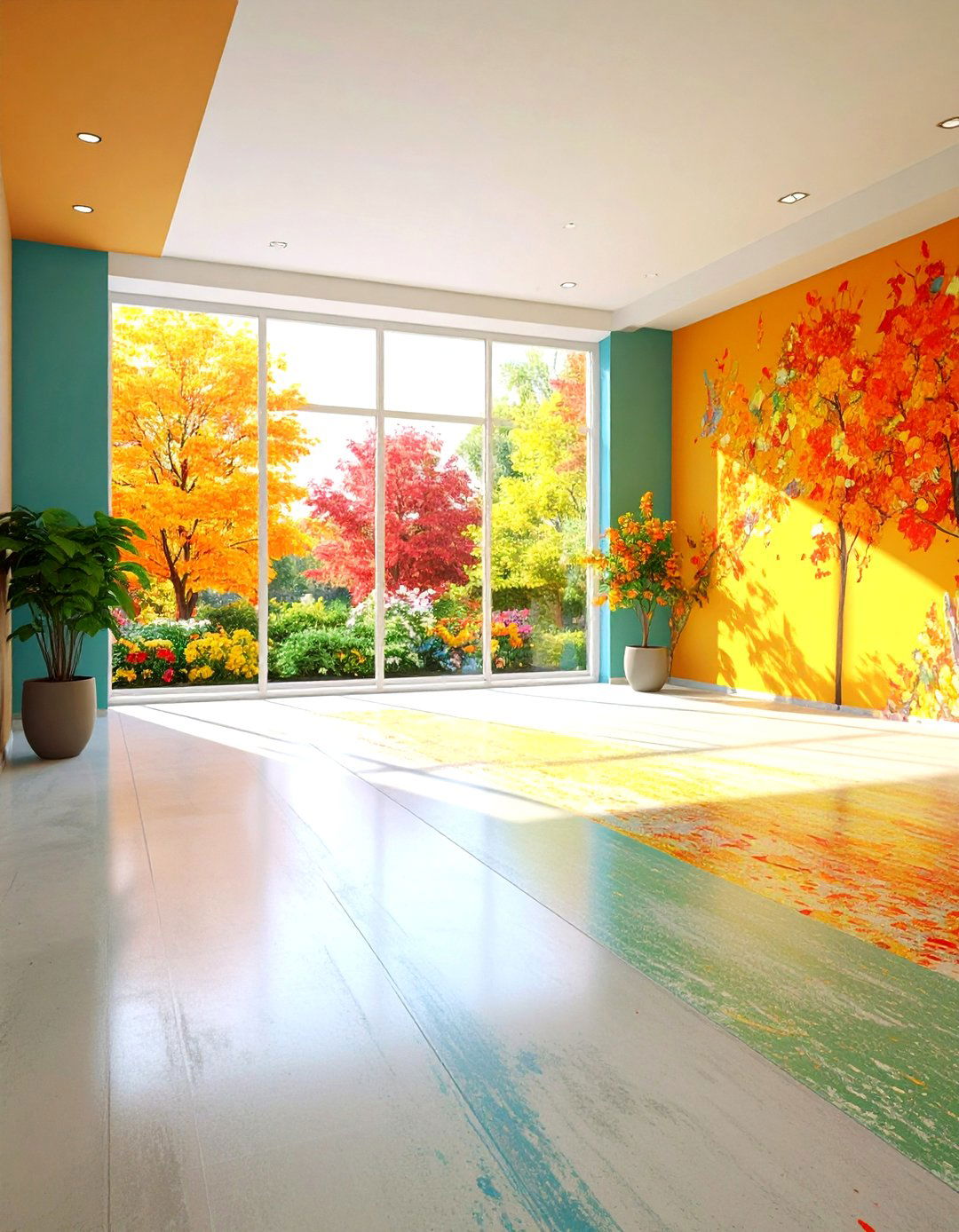

Leave a Reply